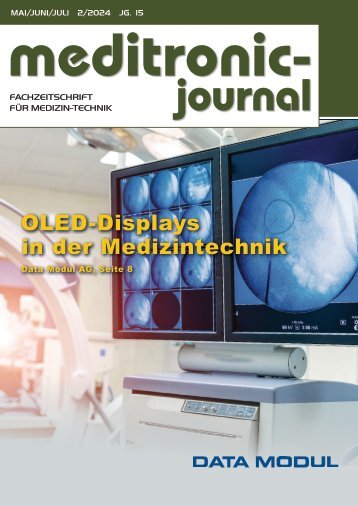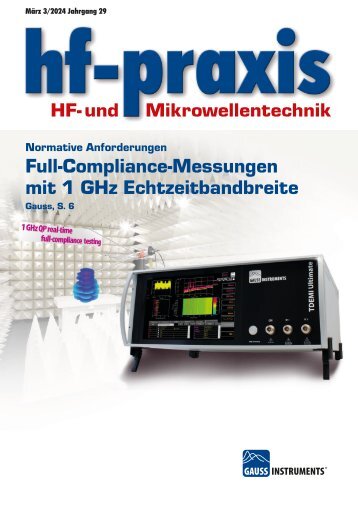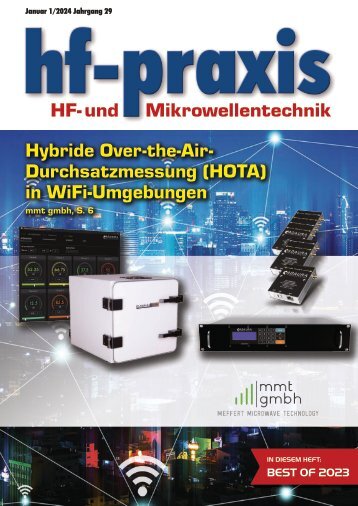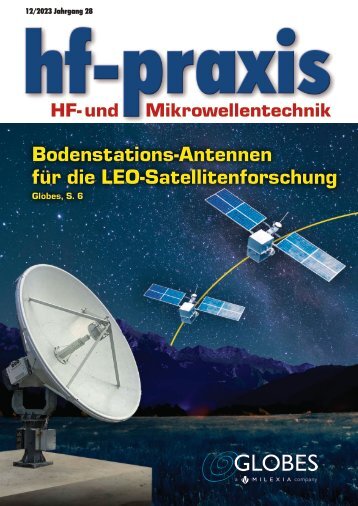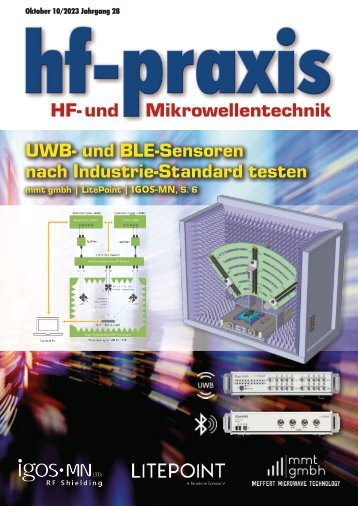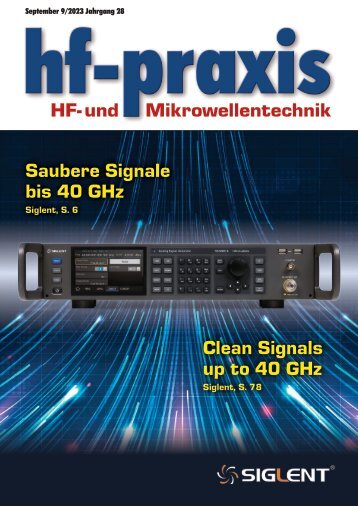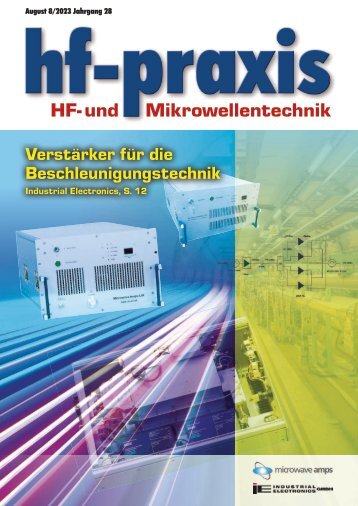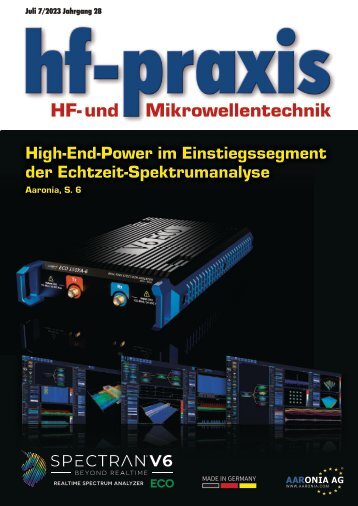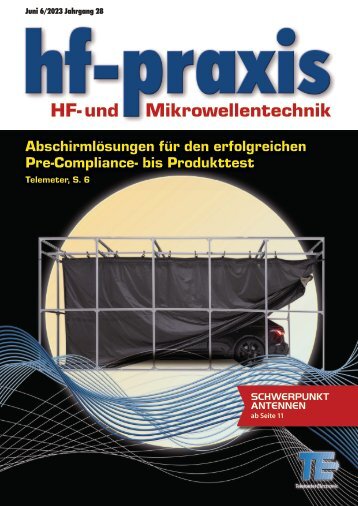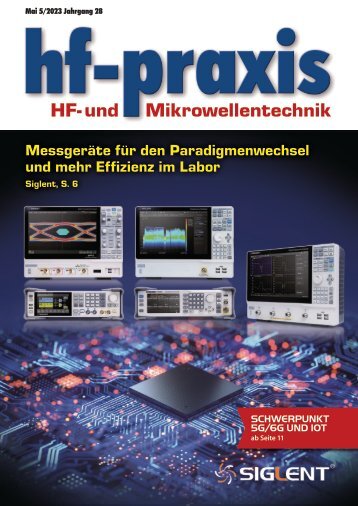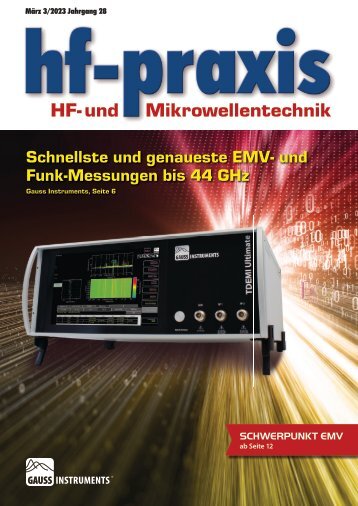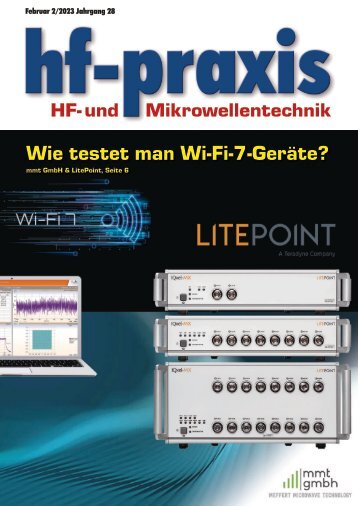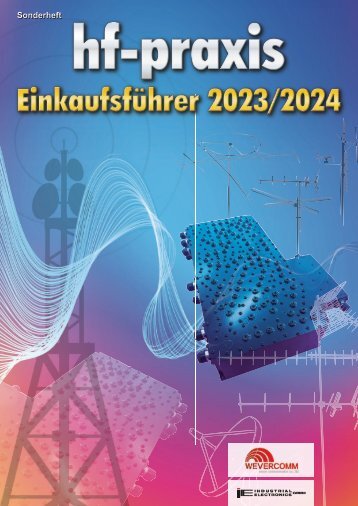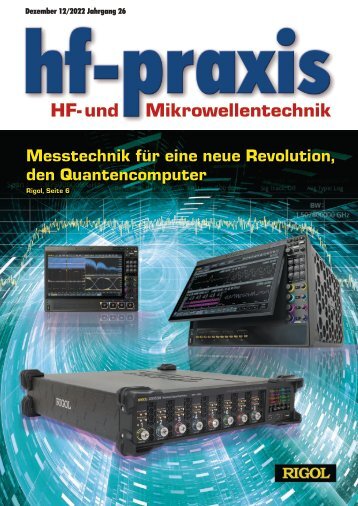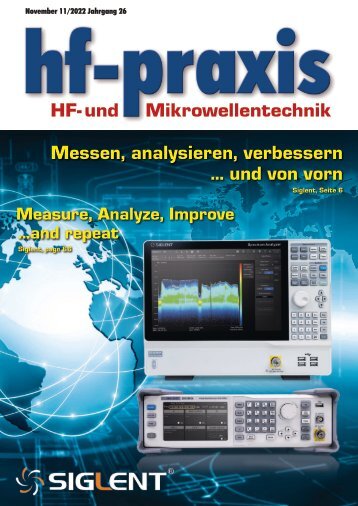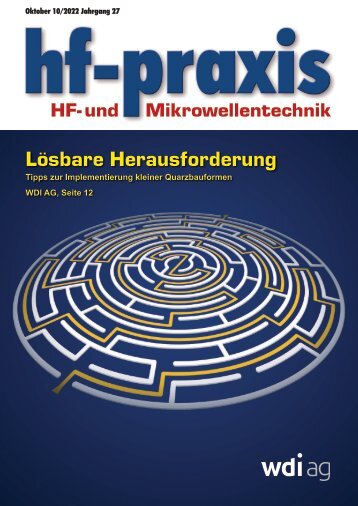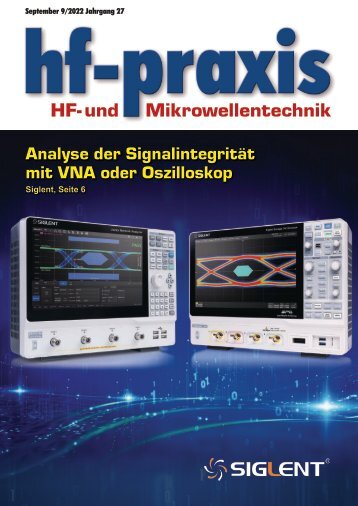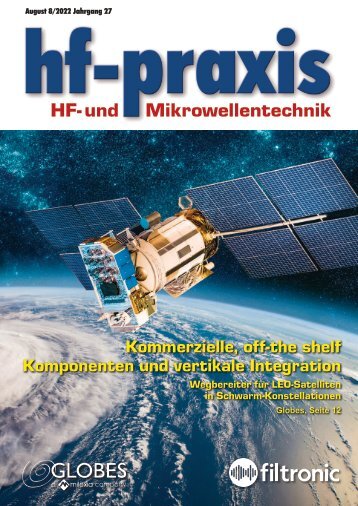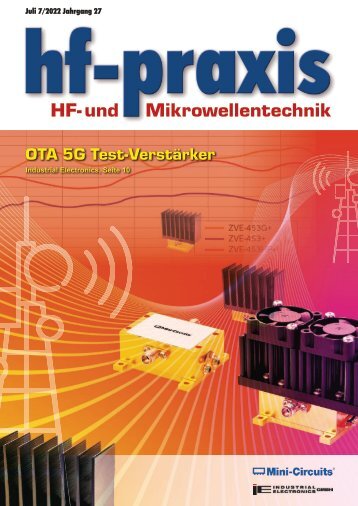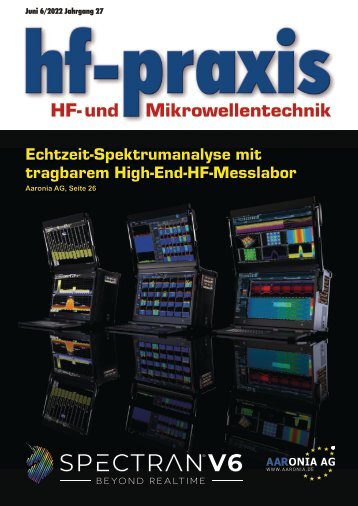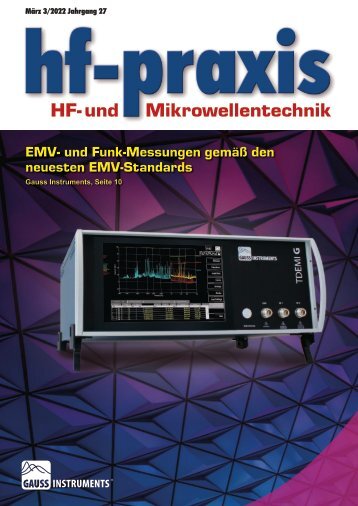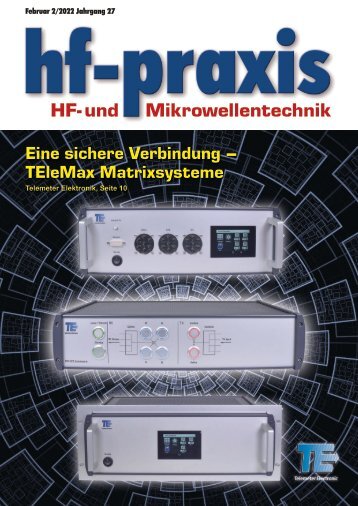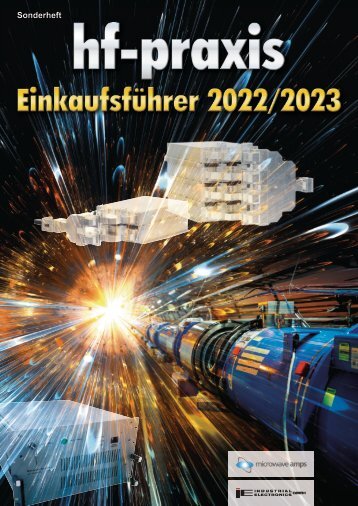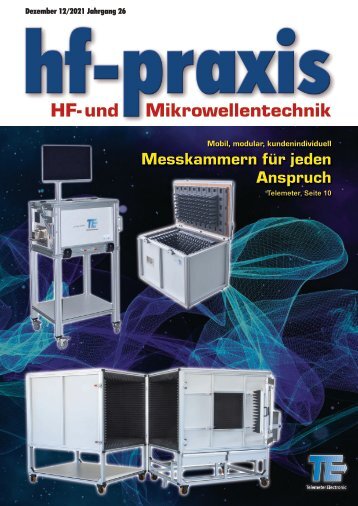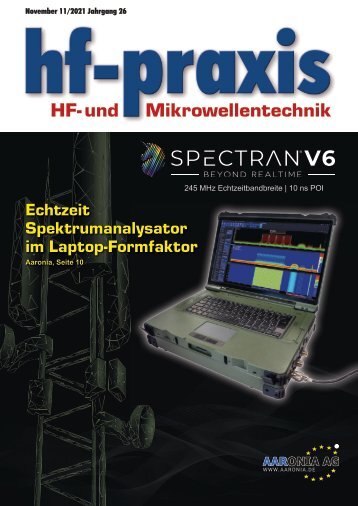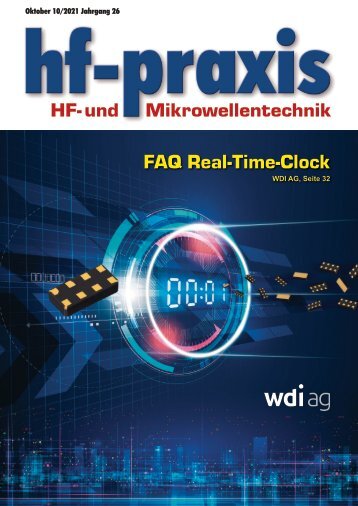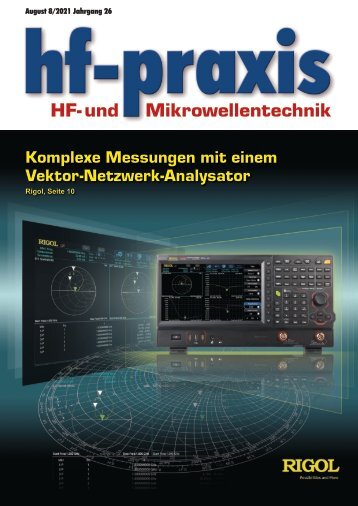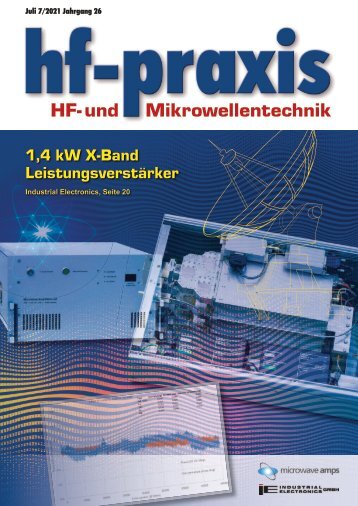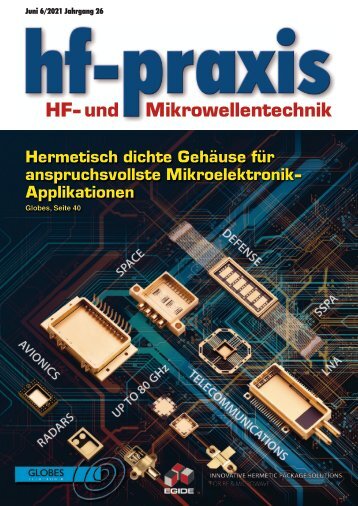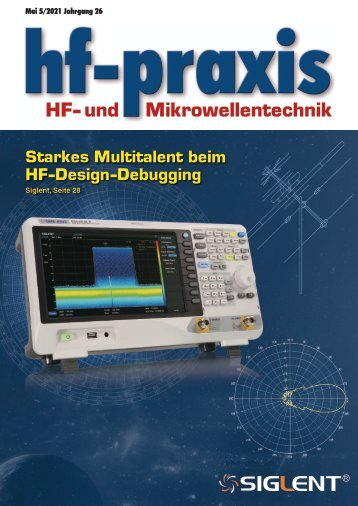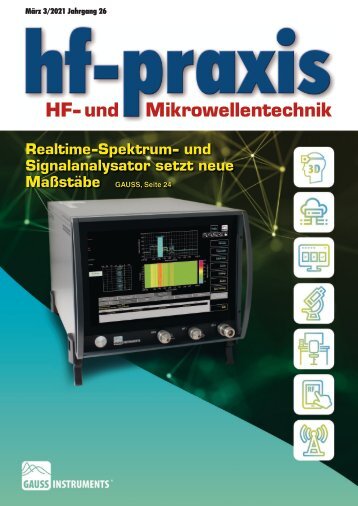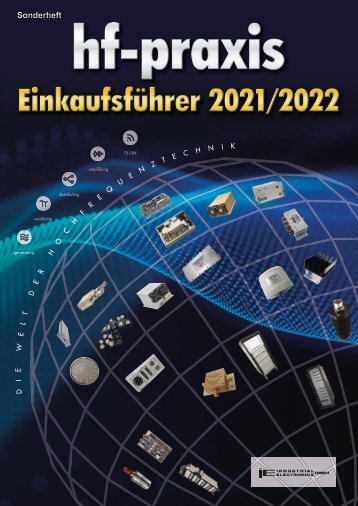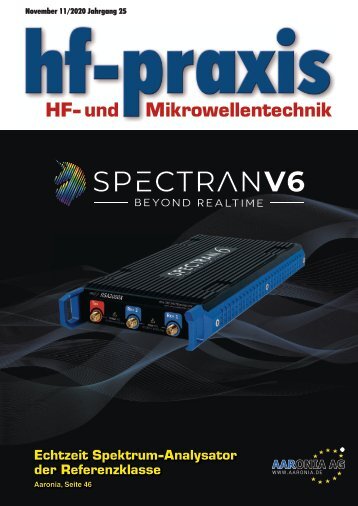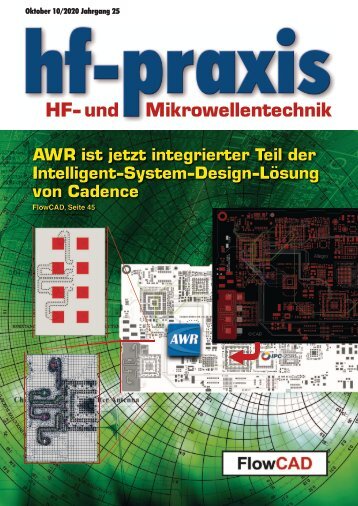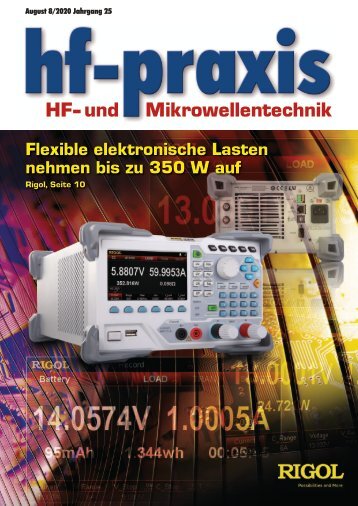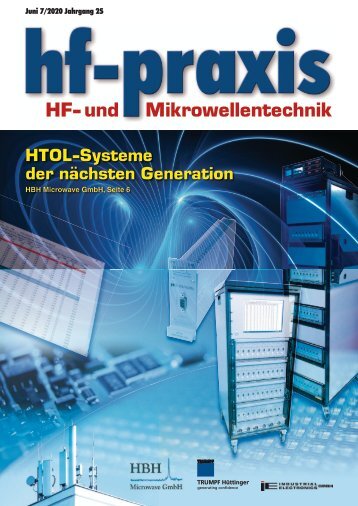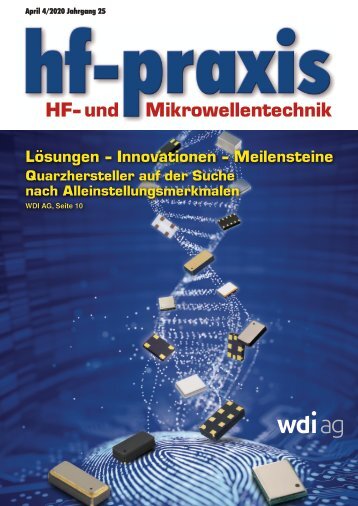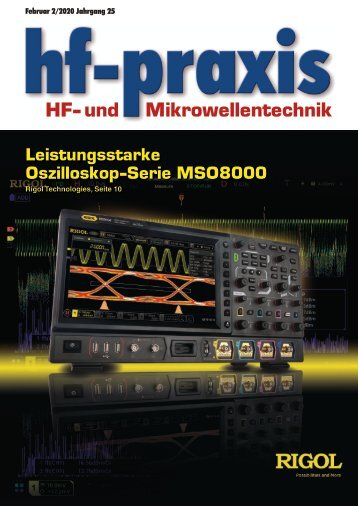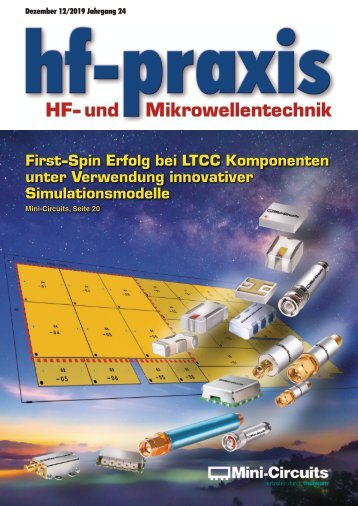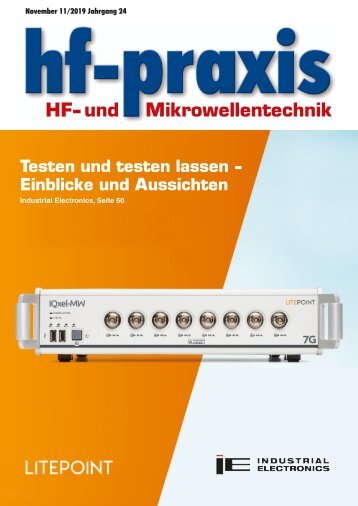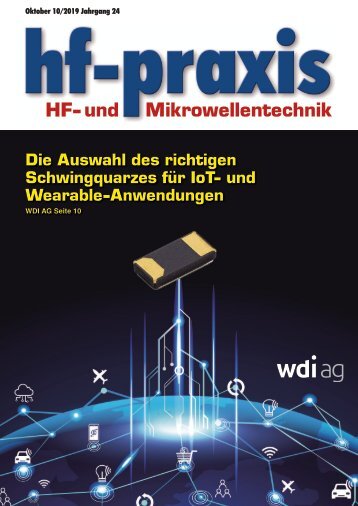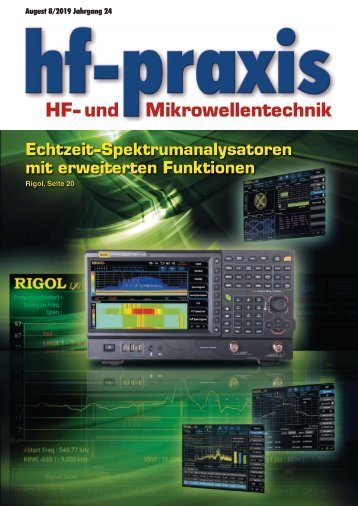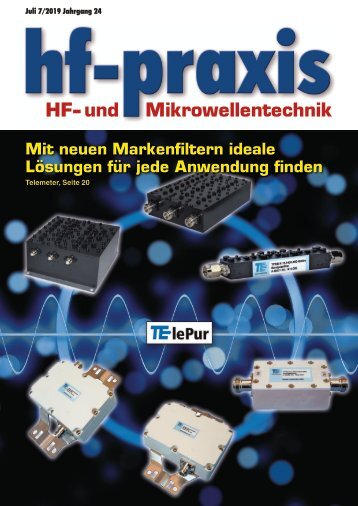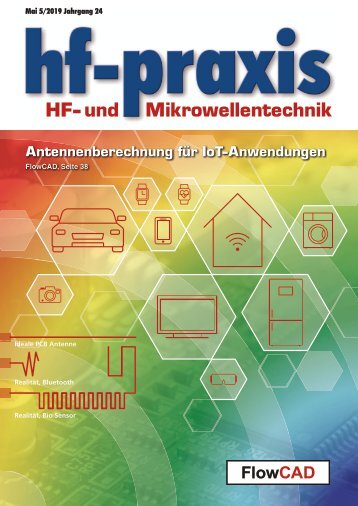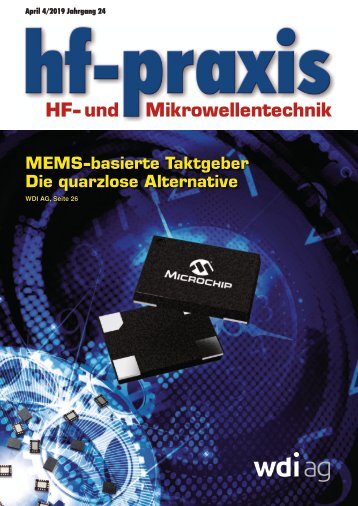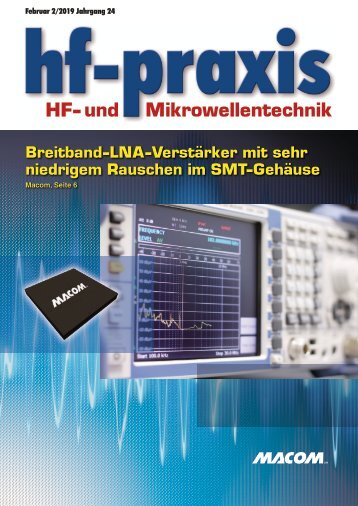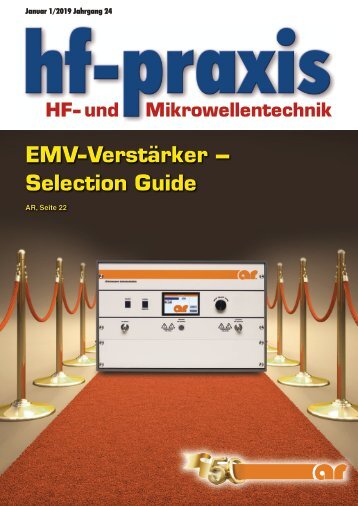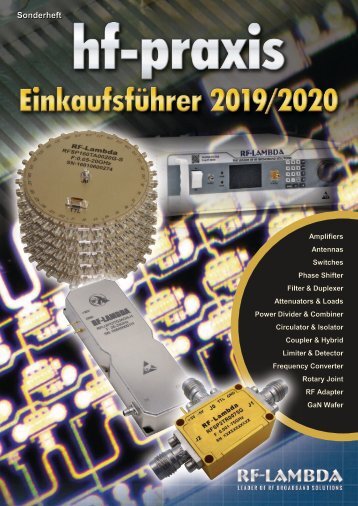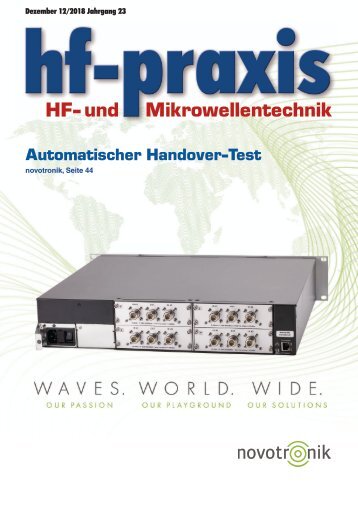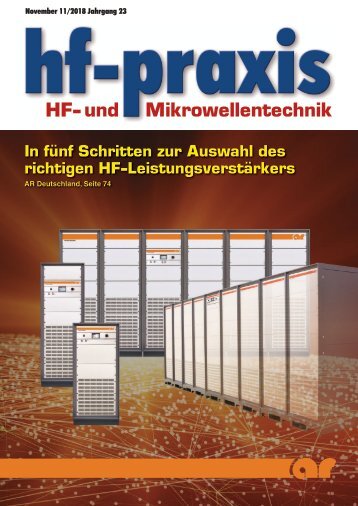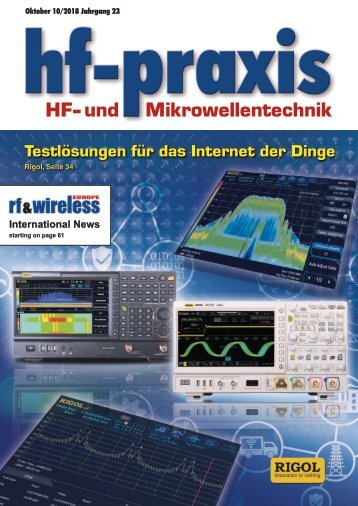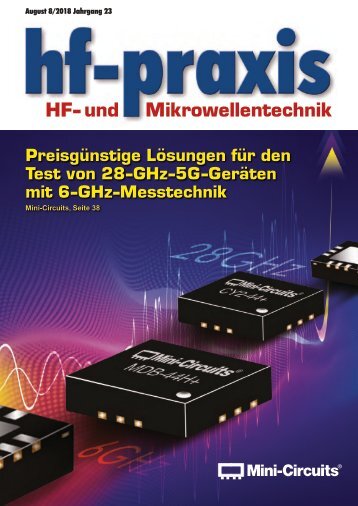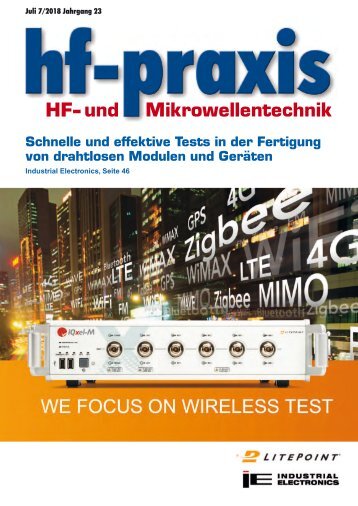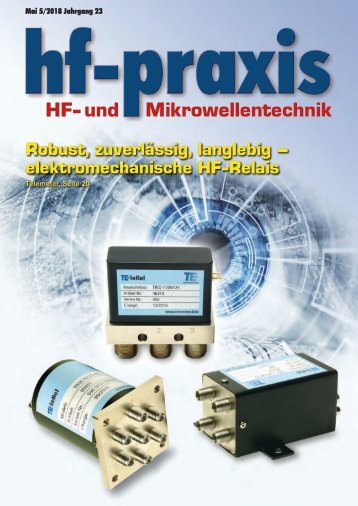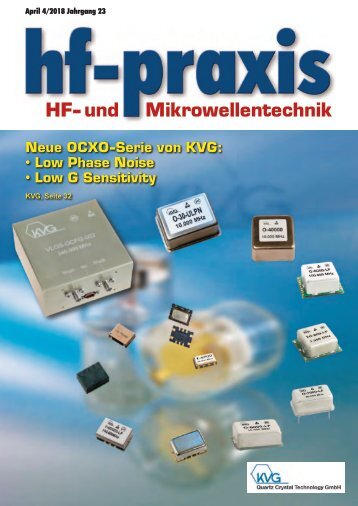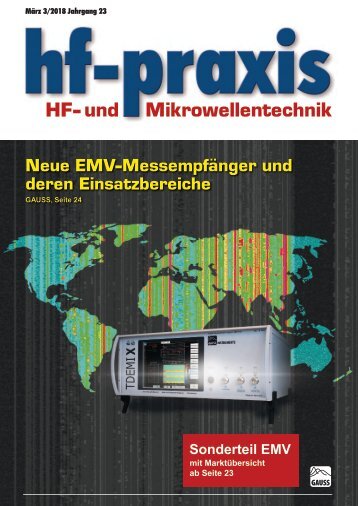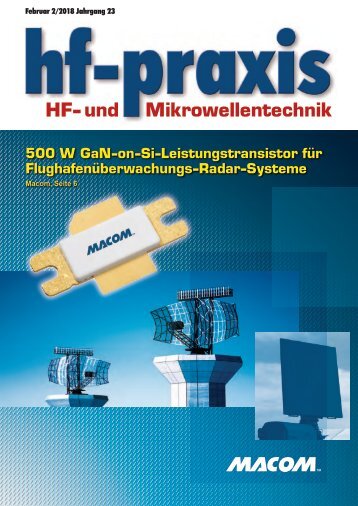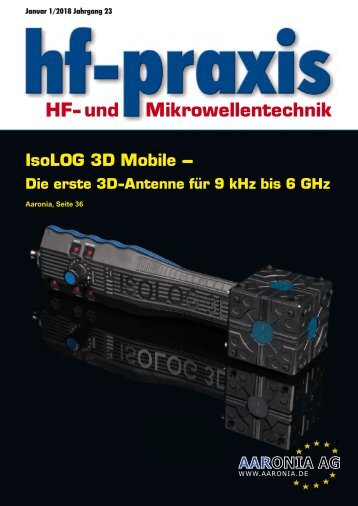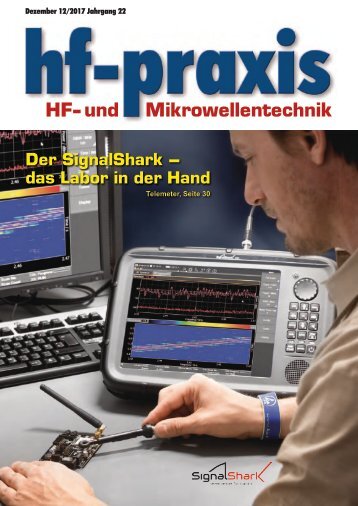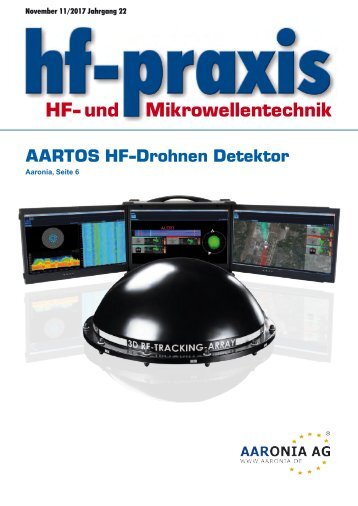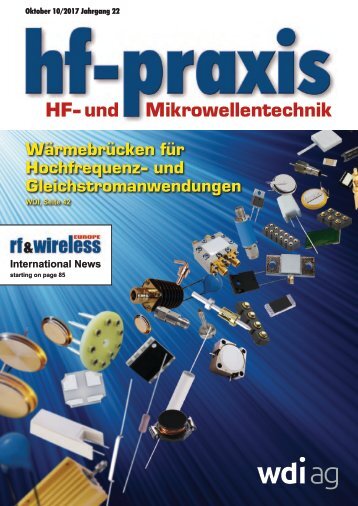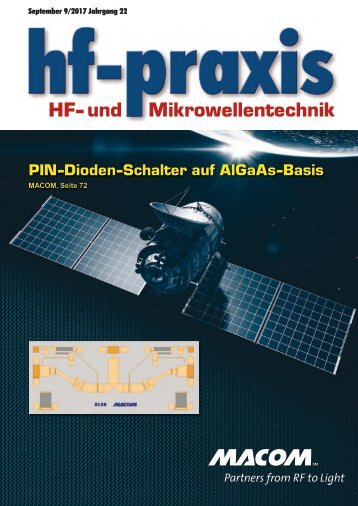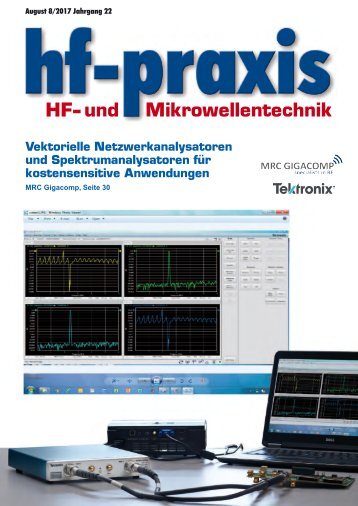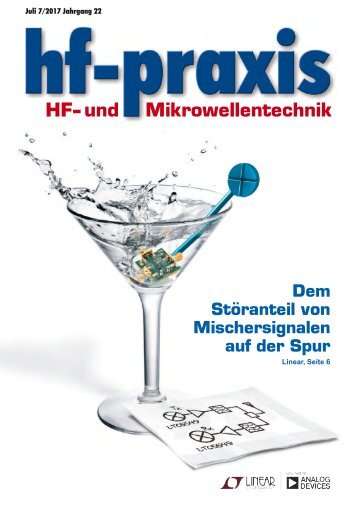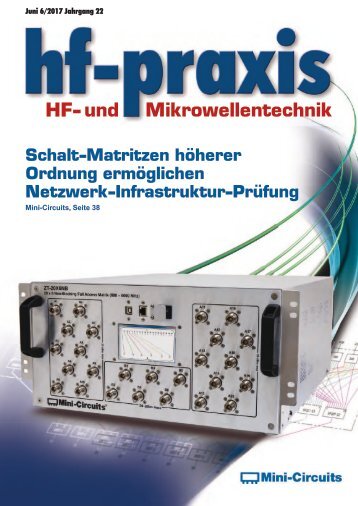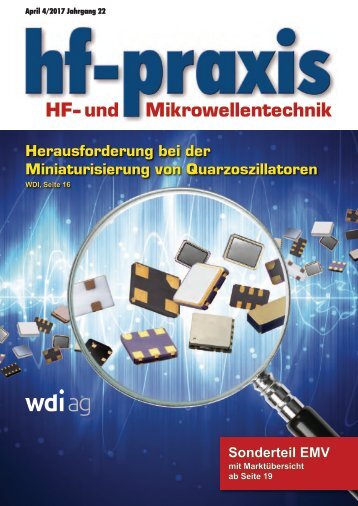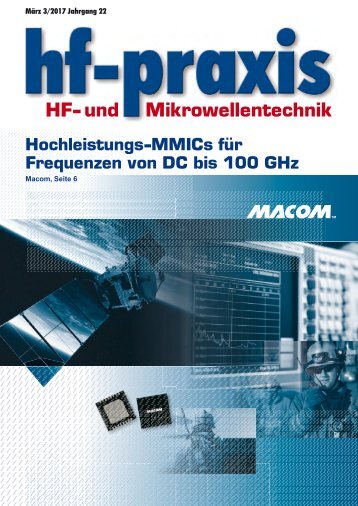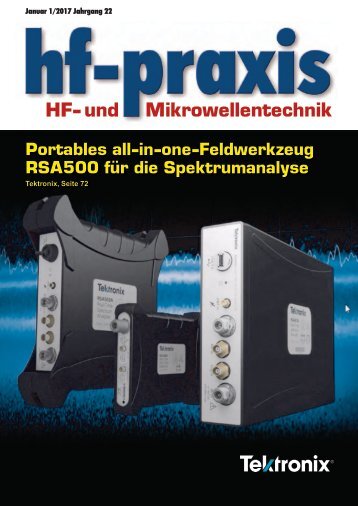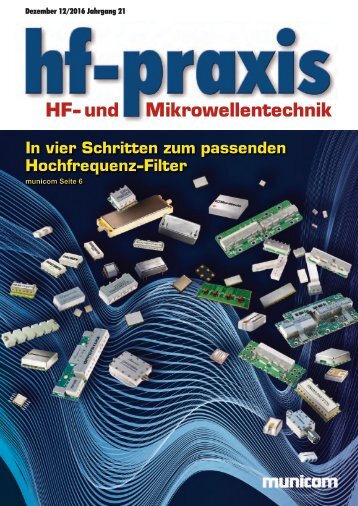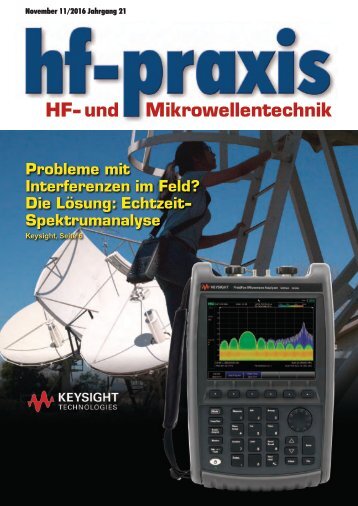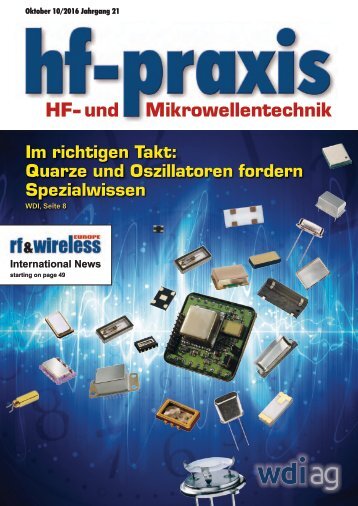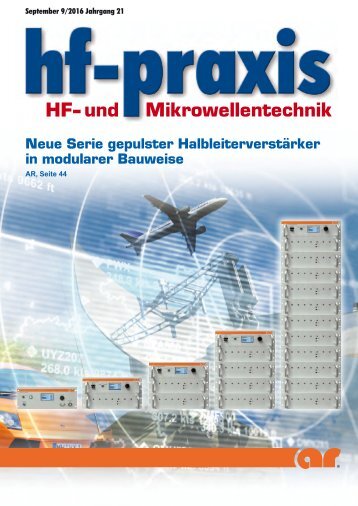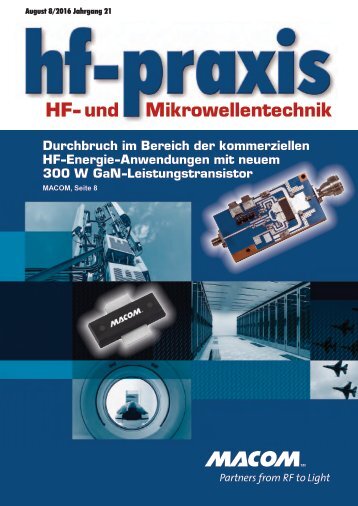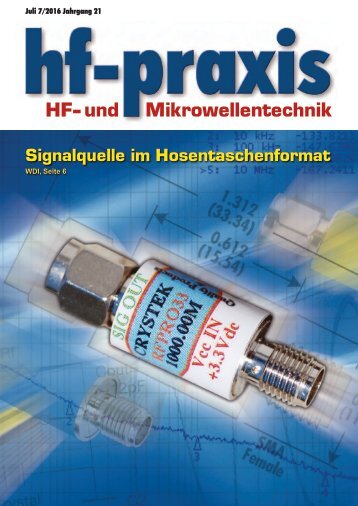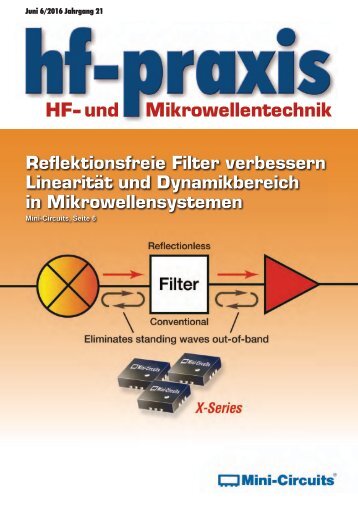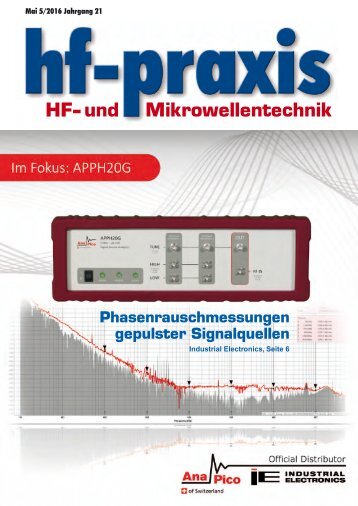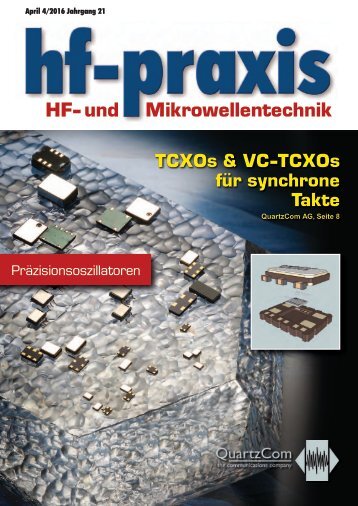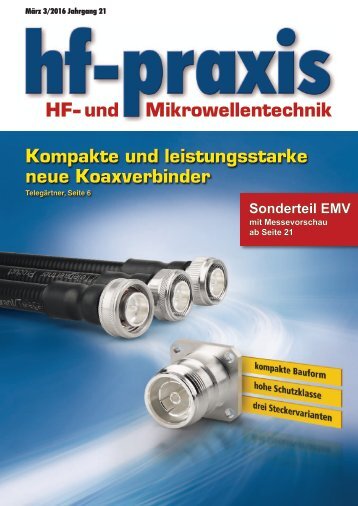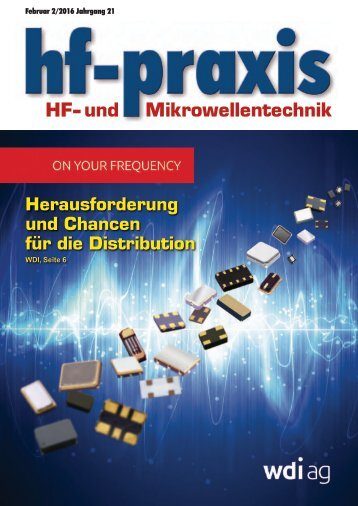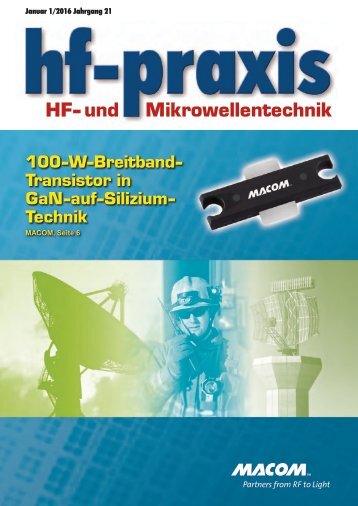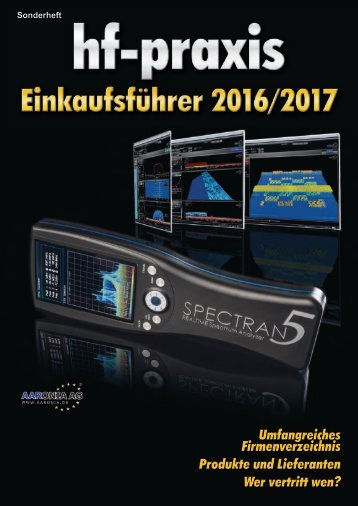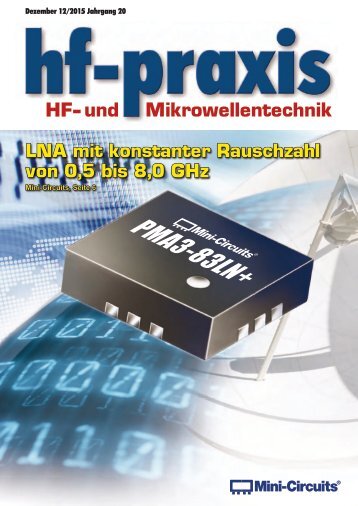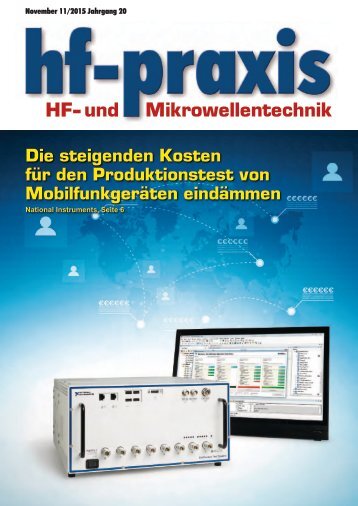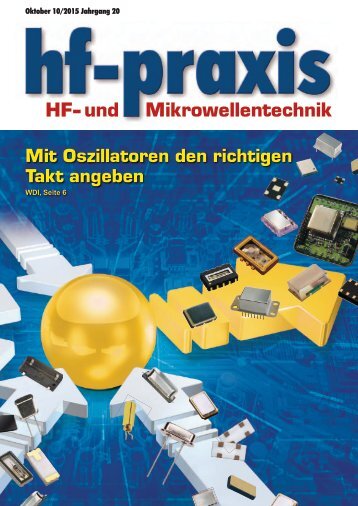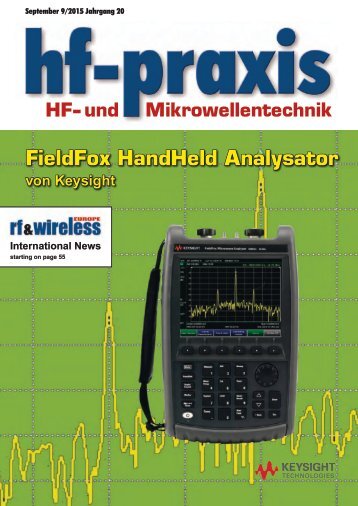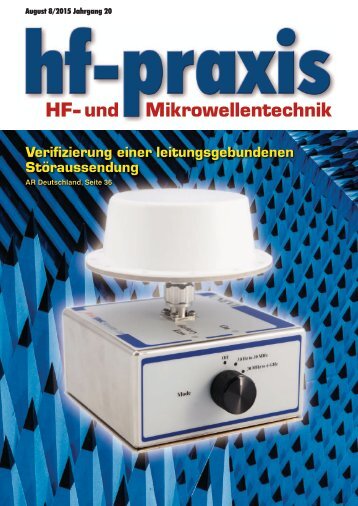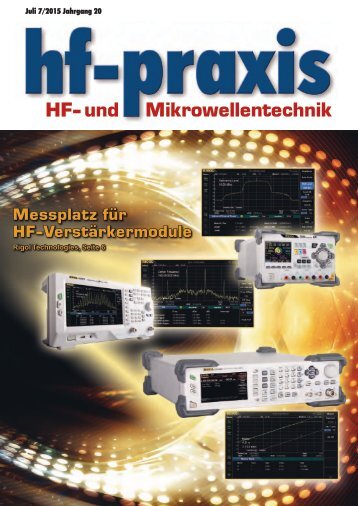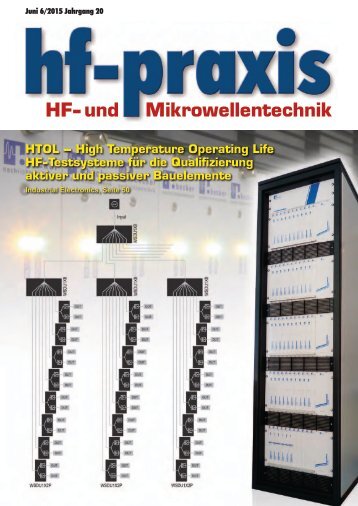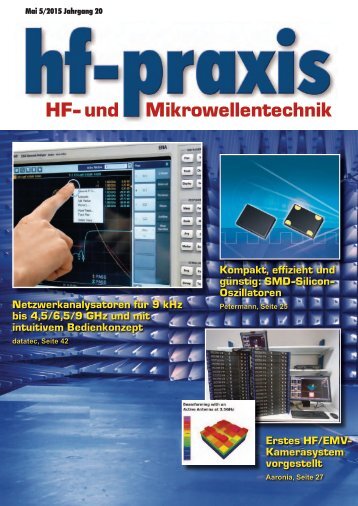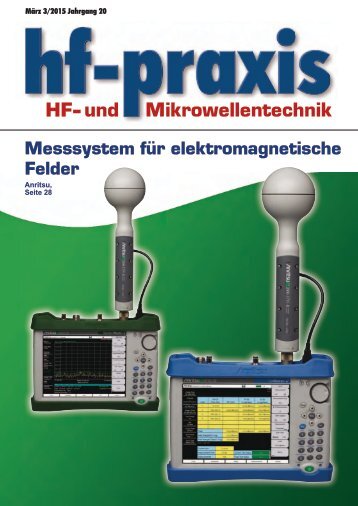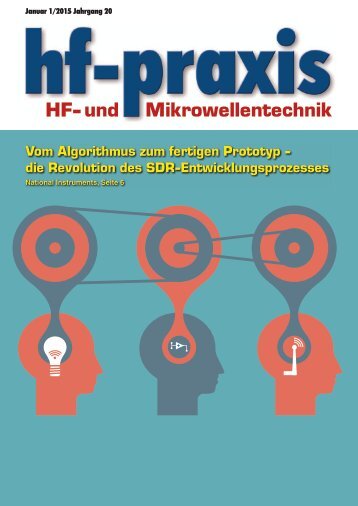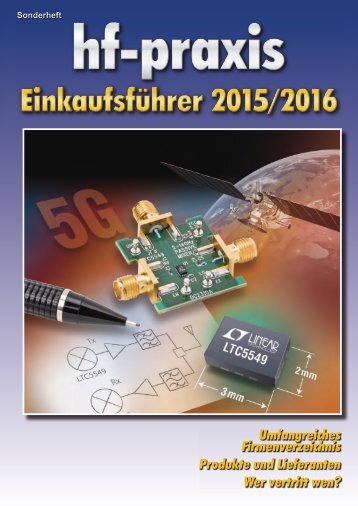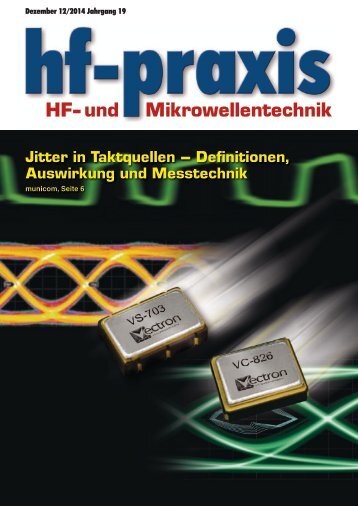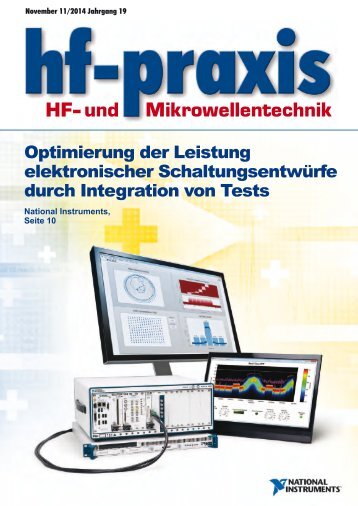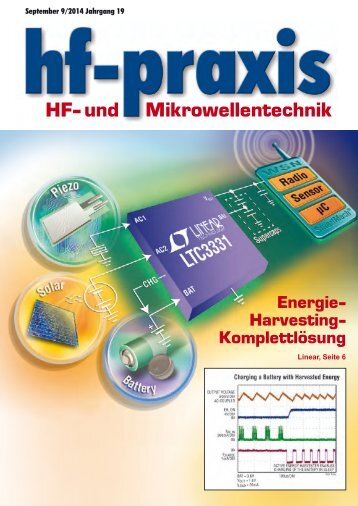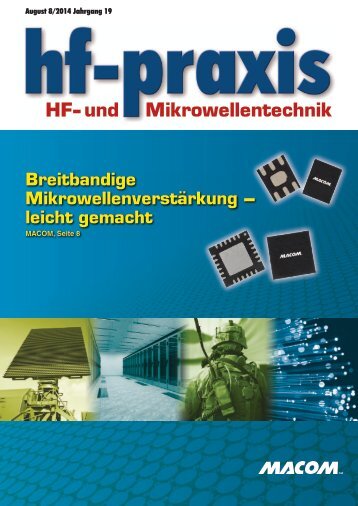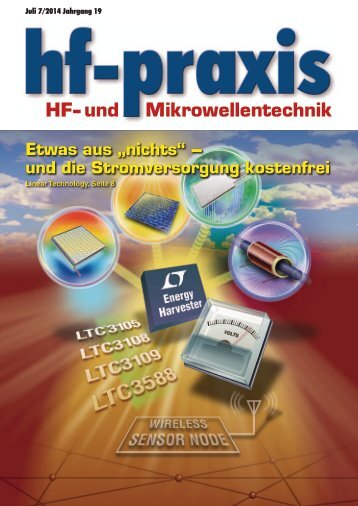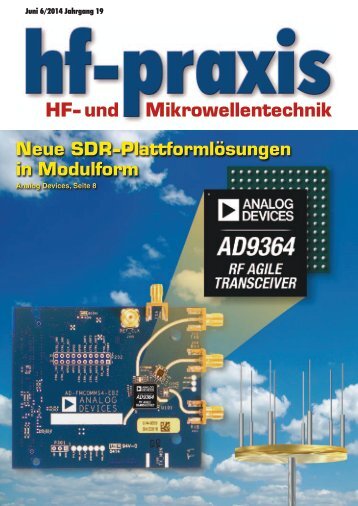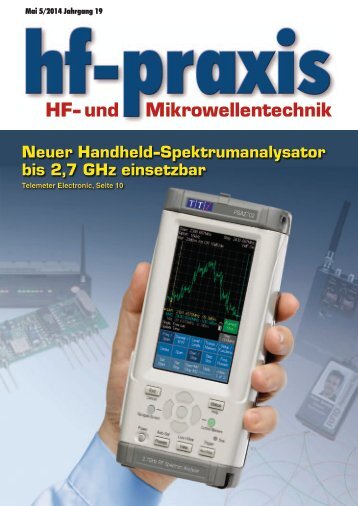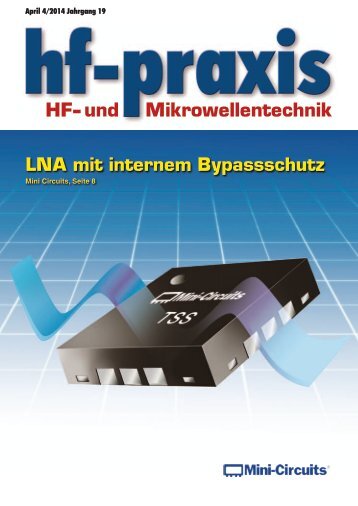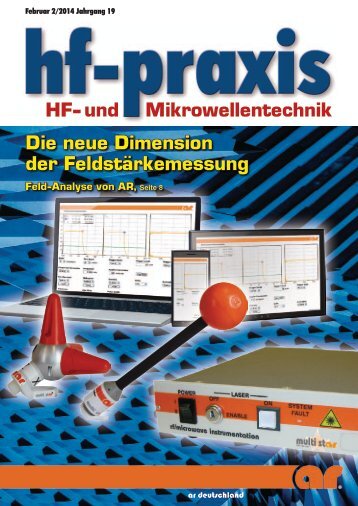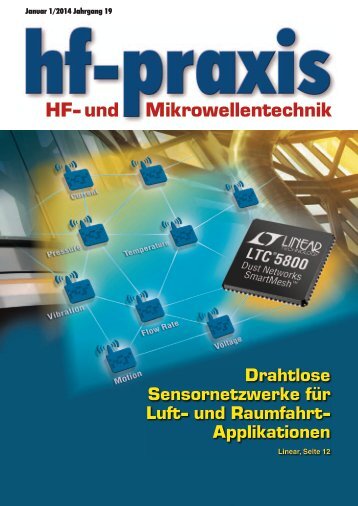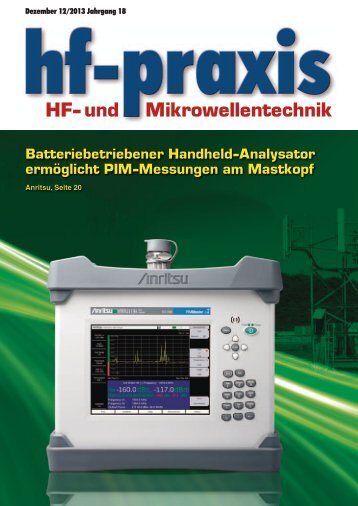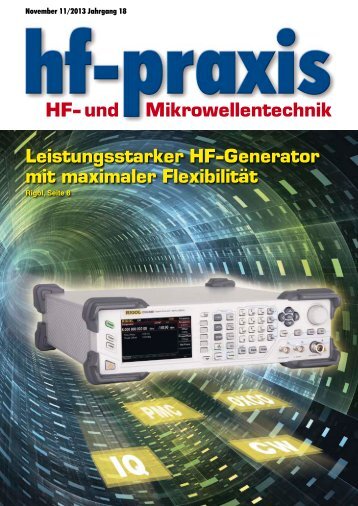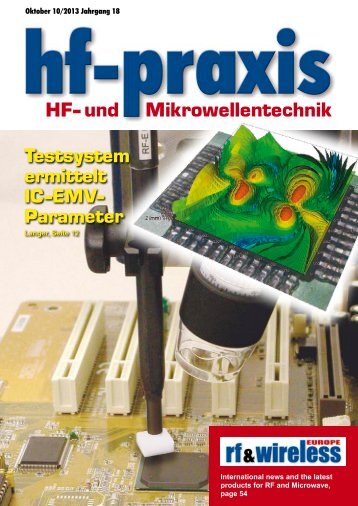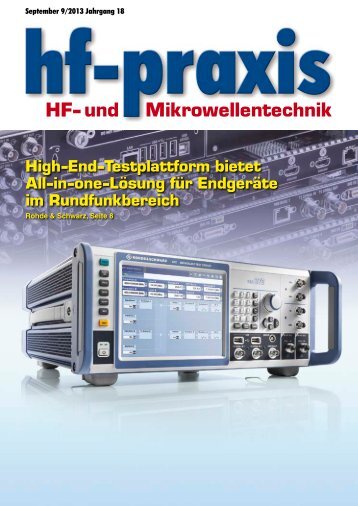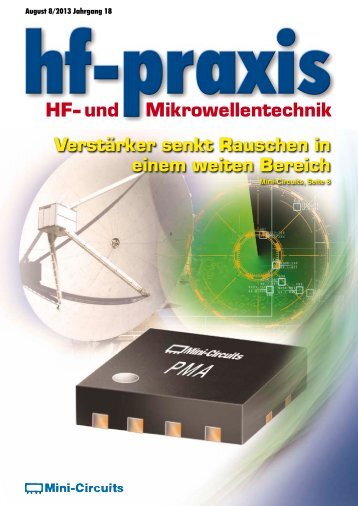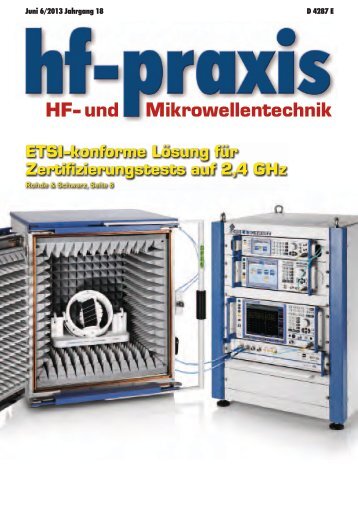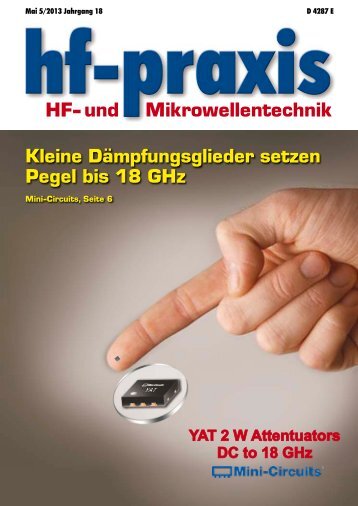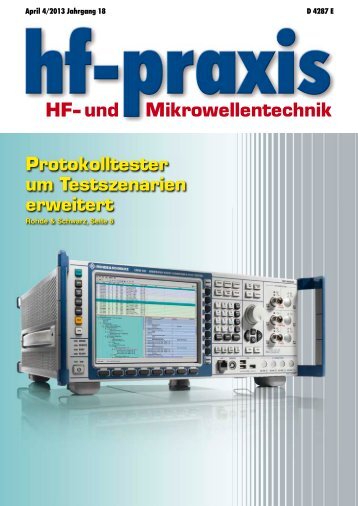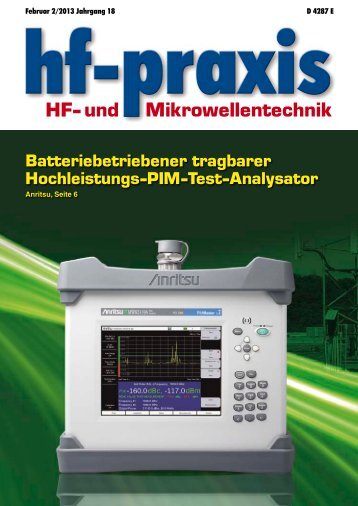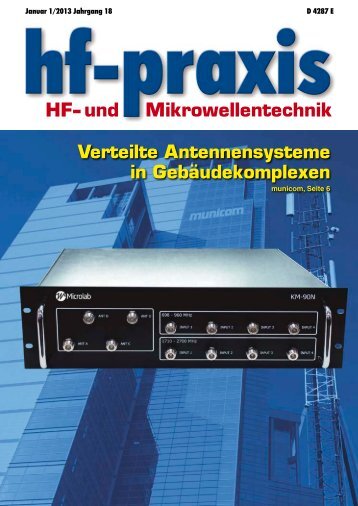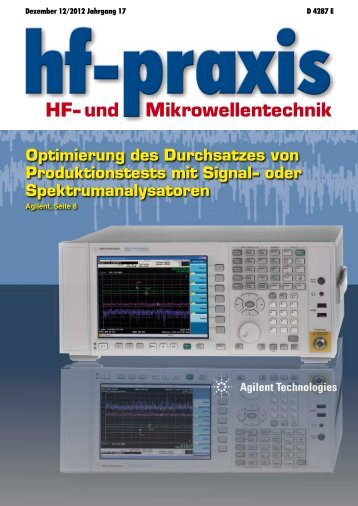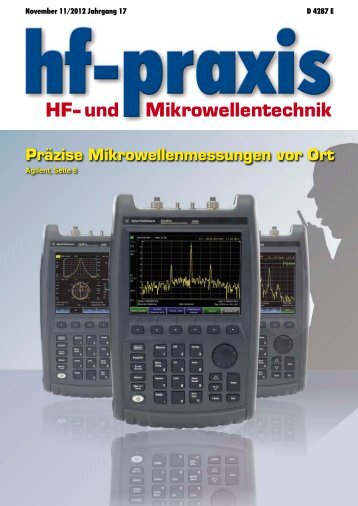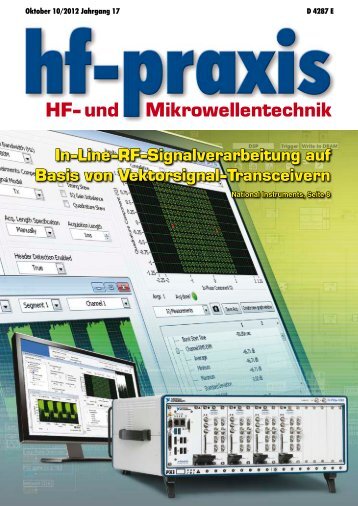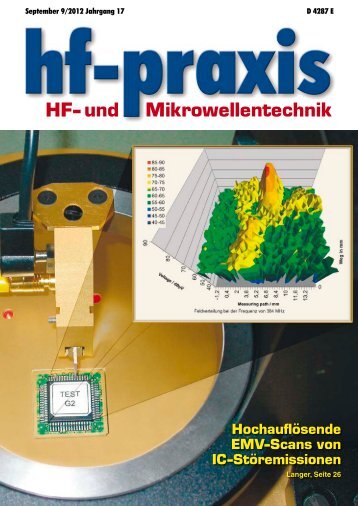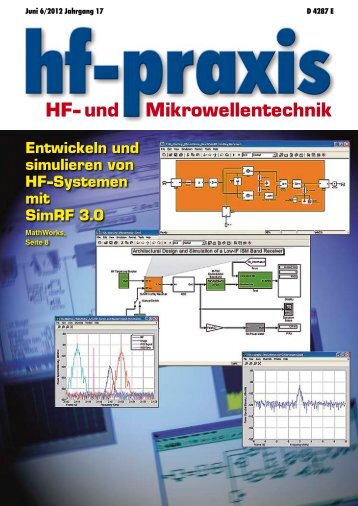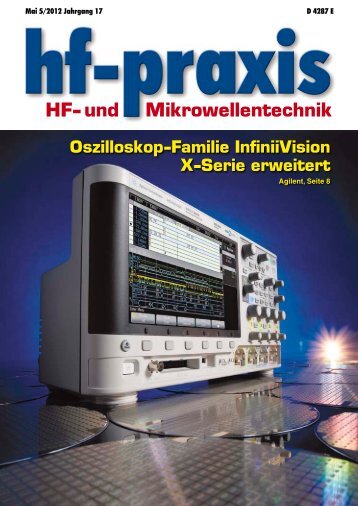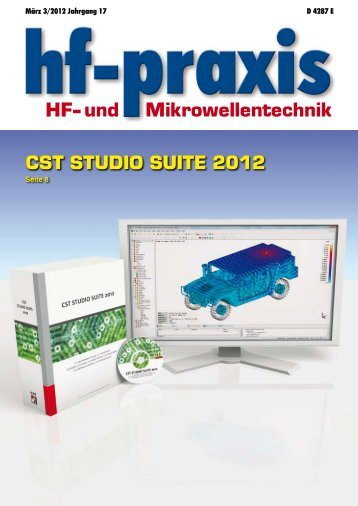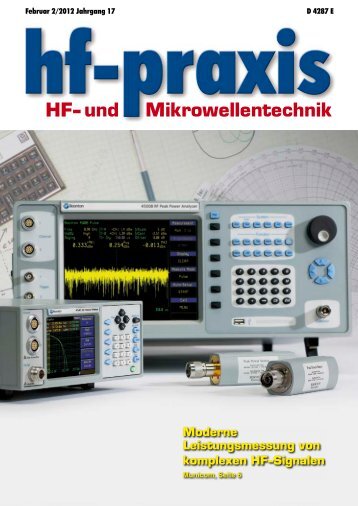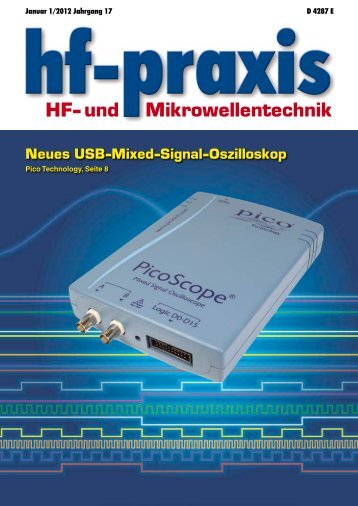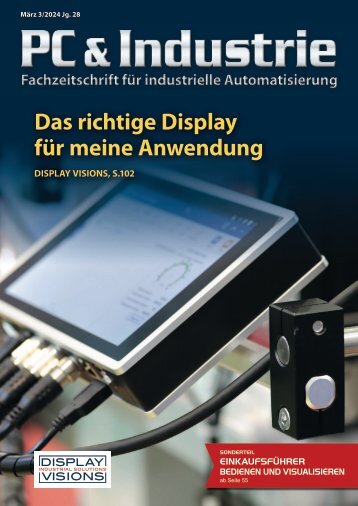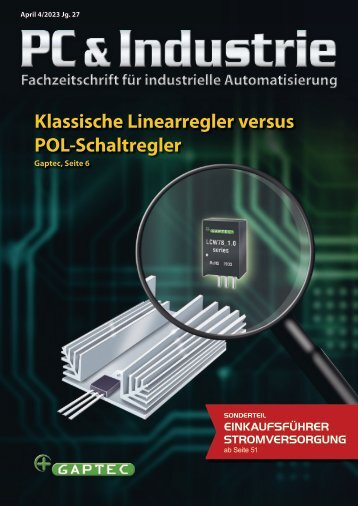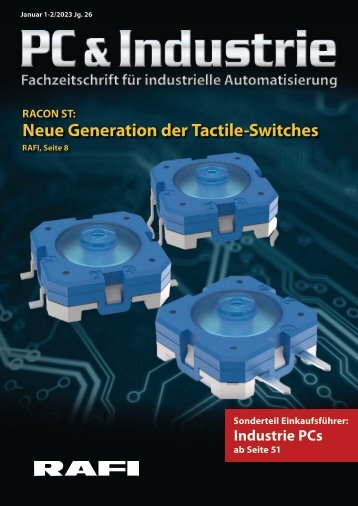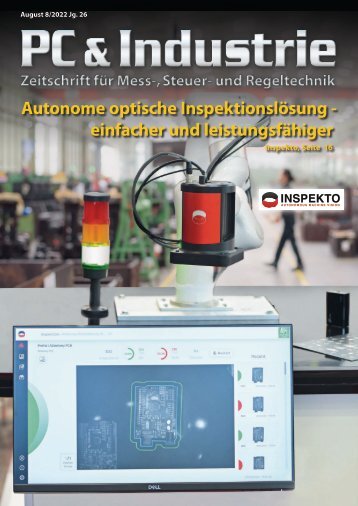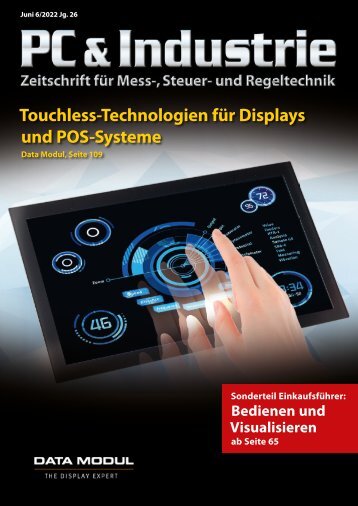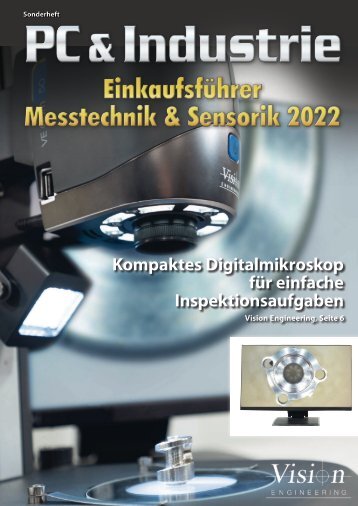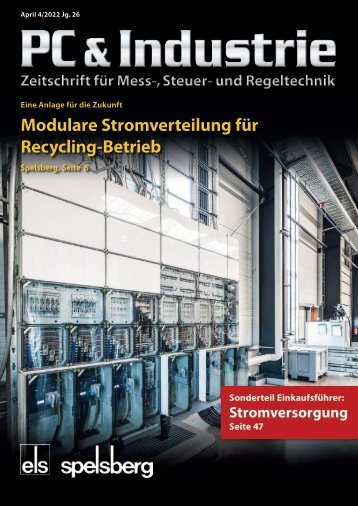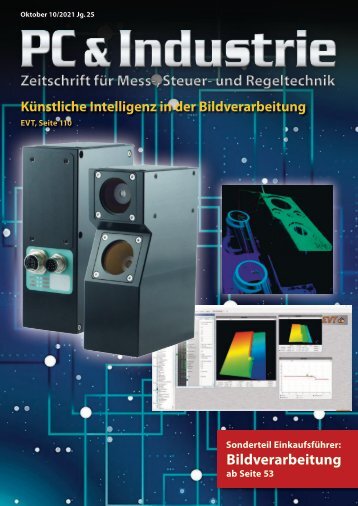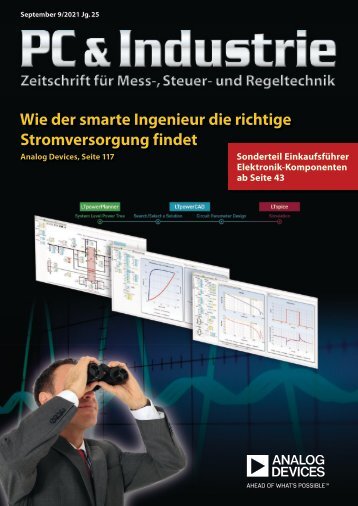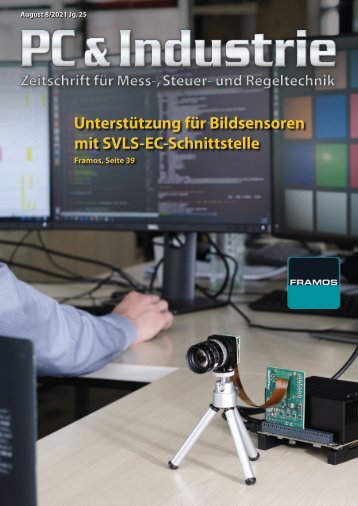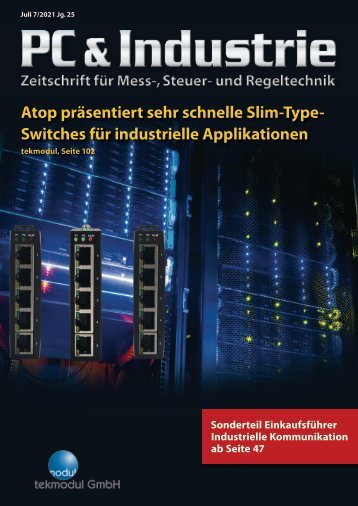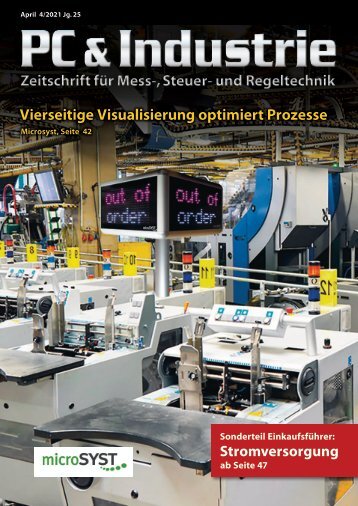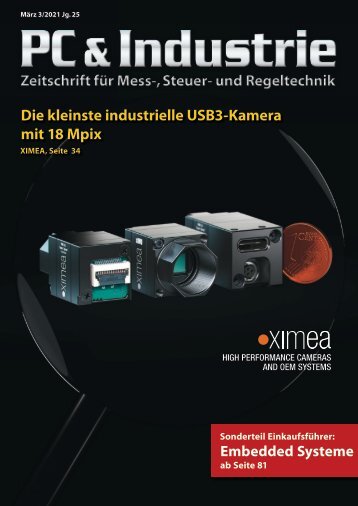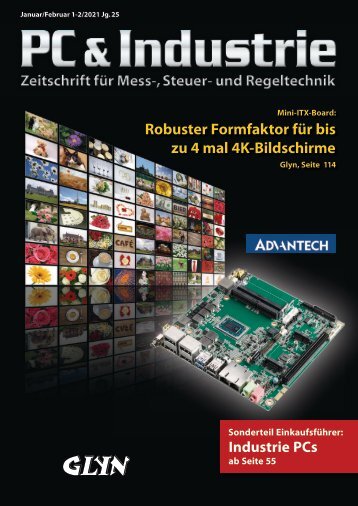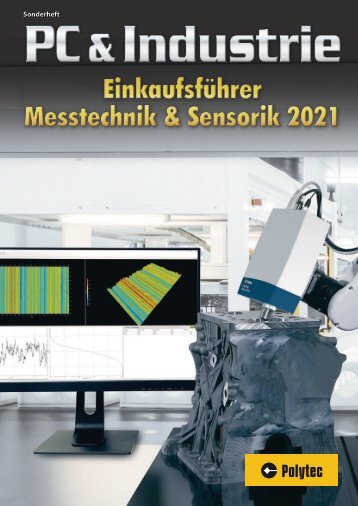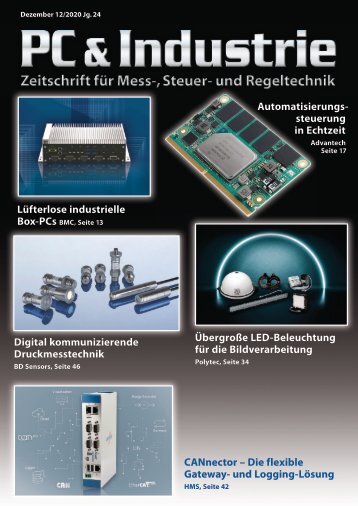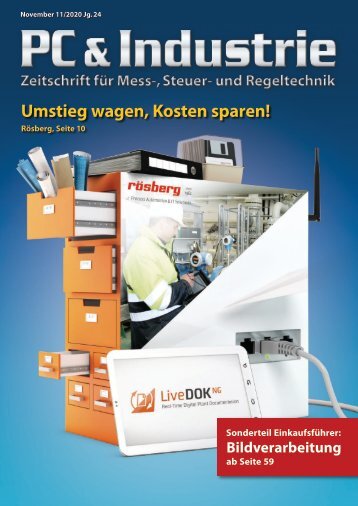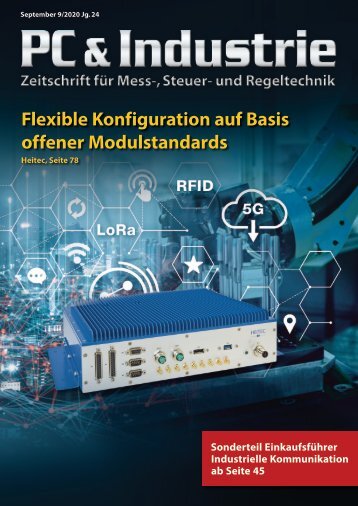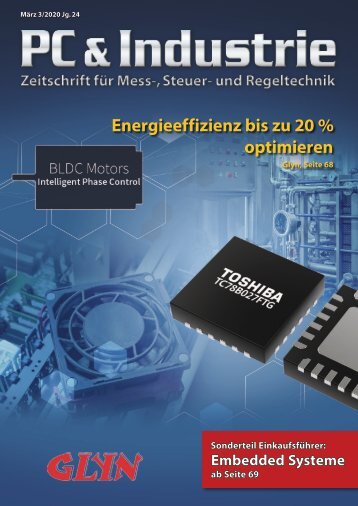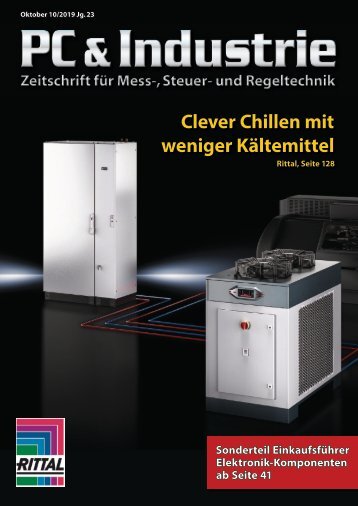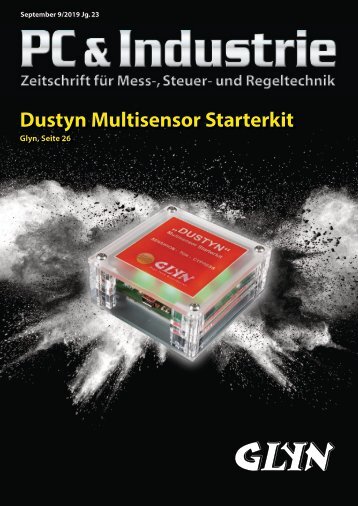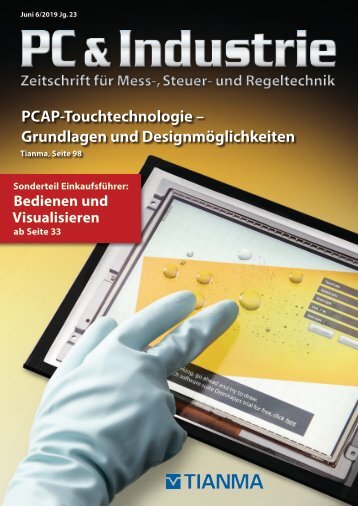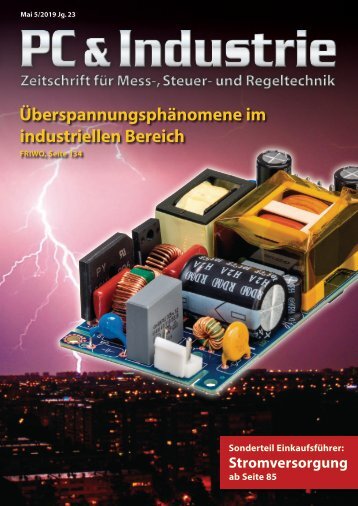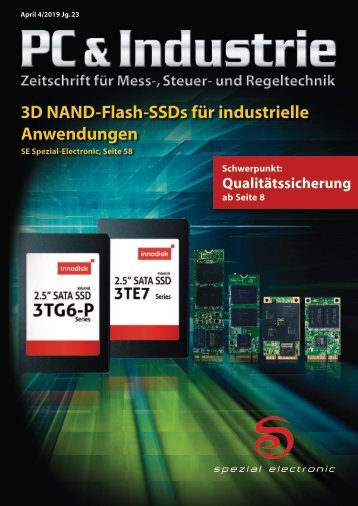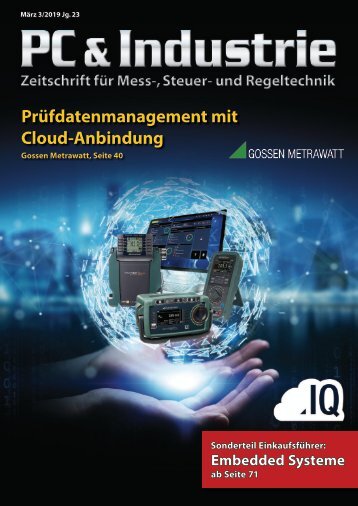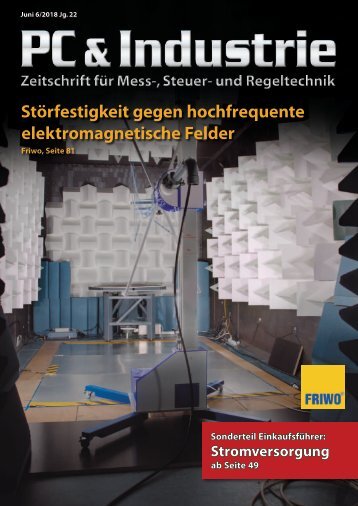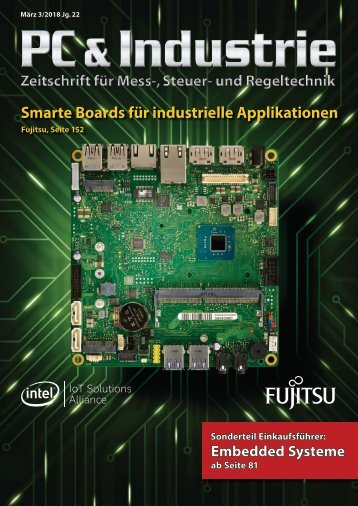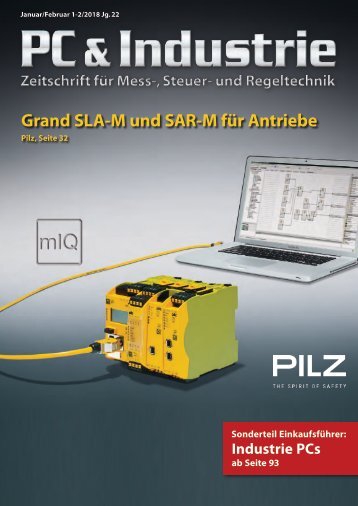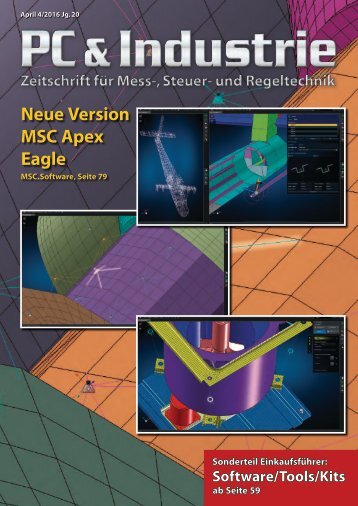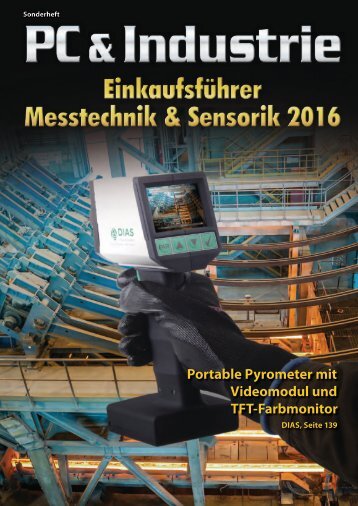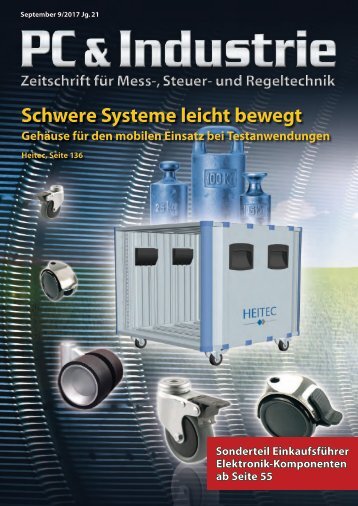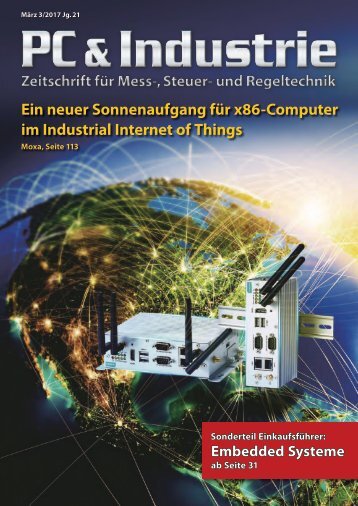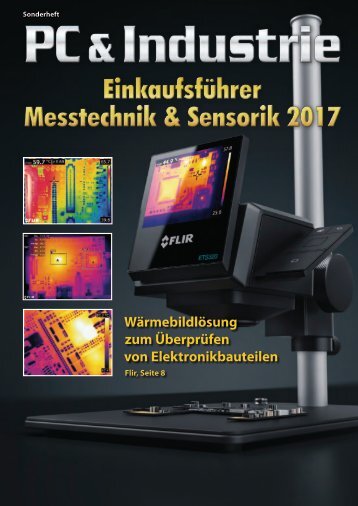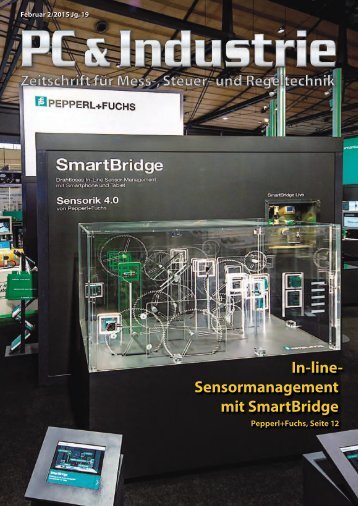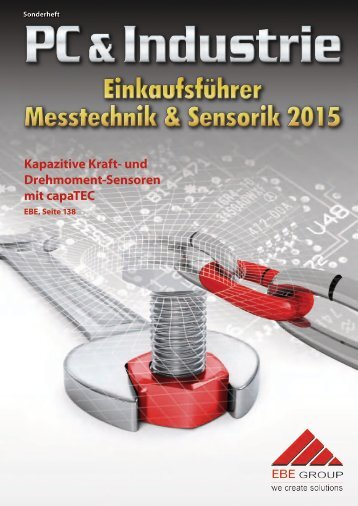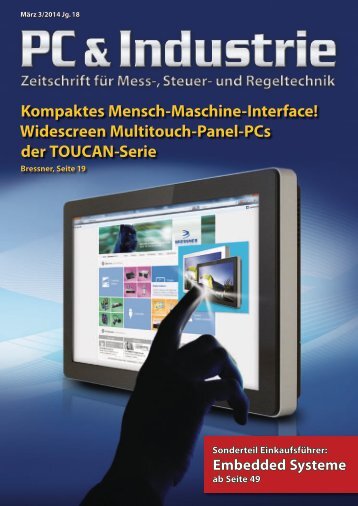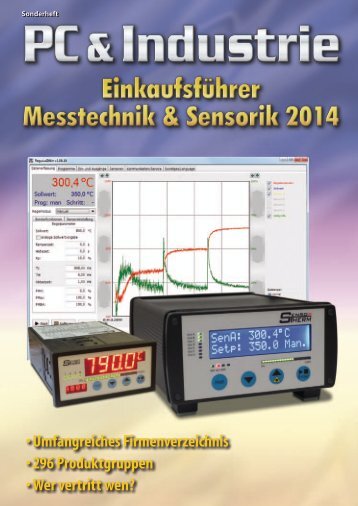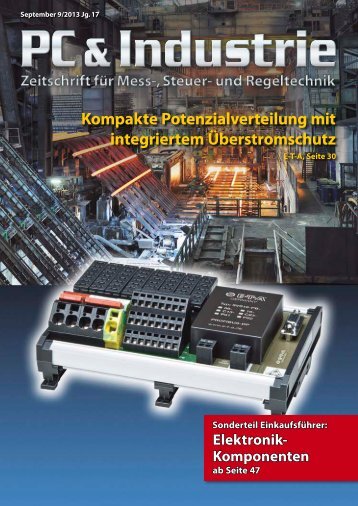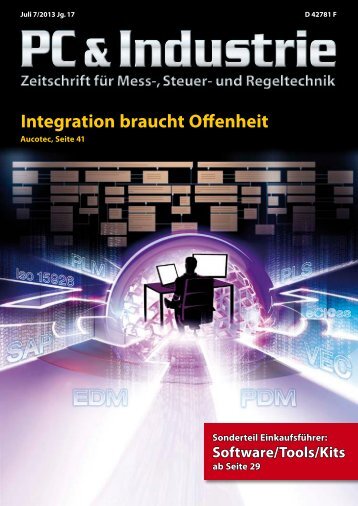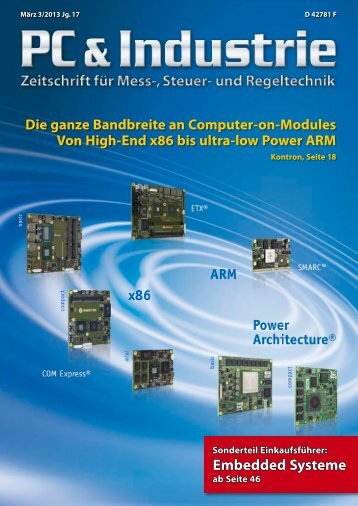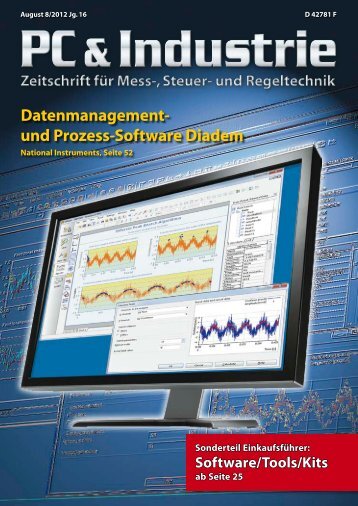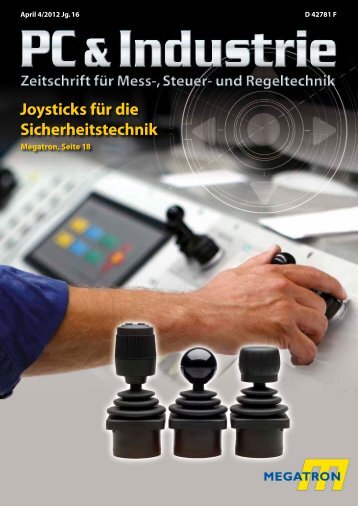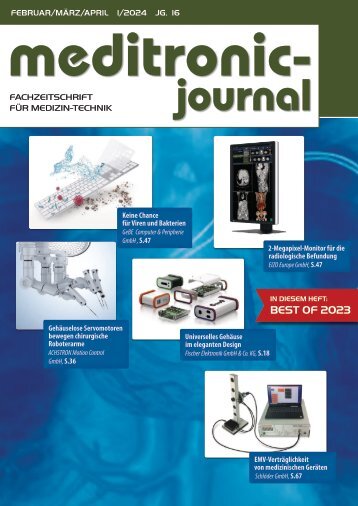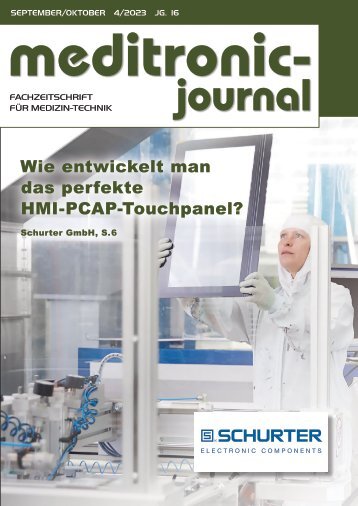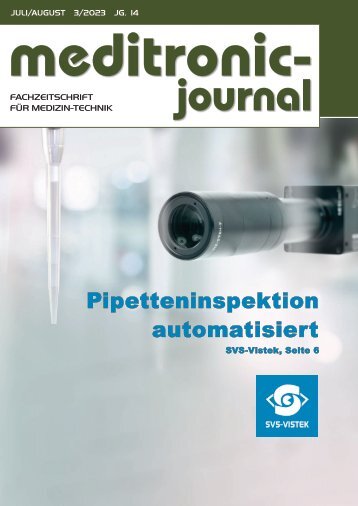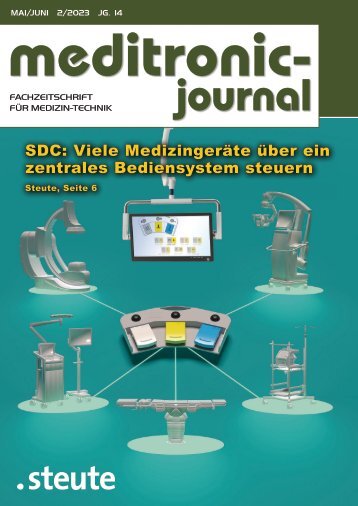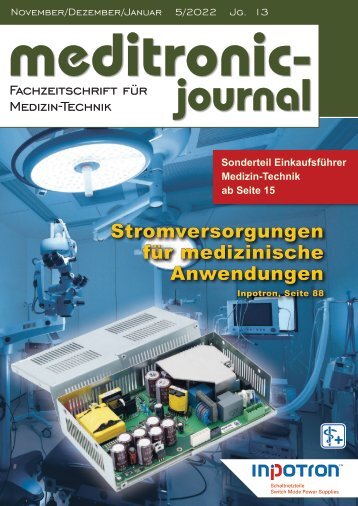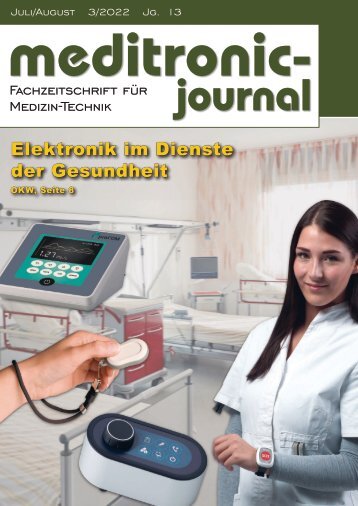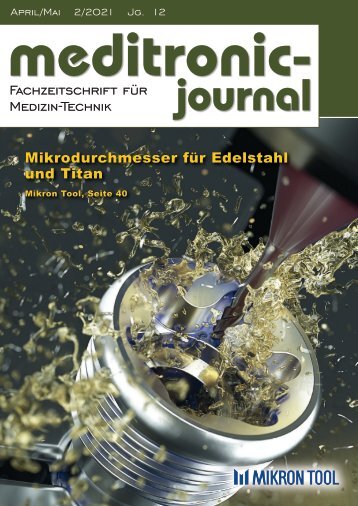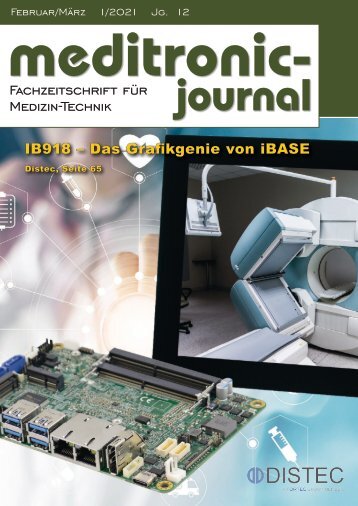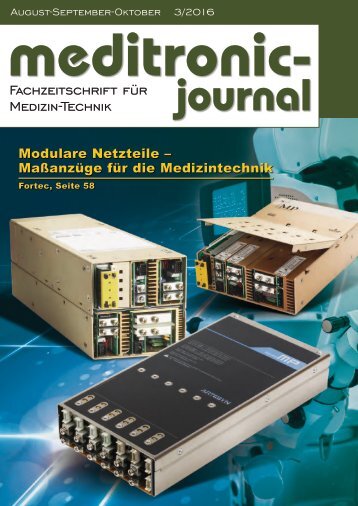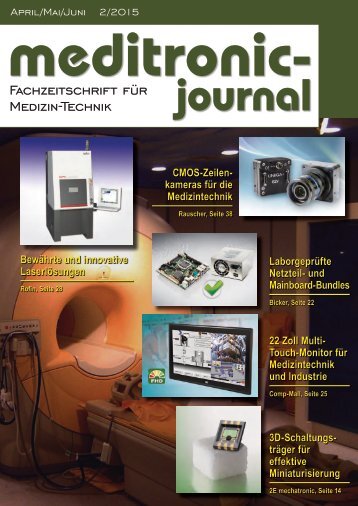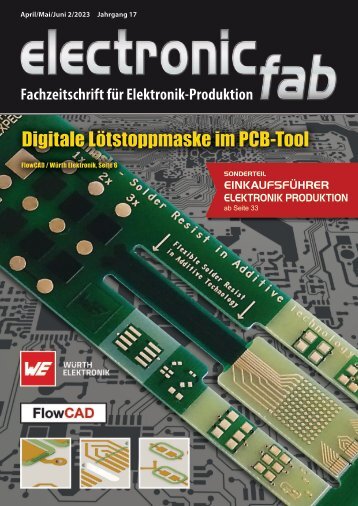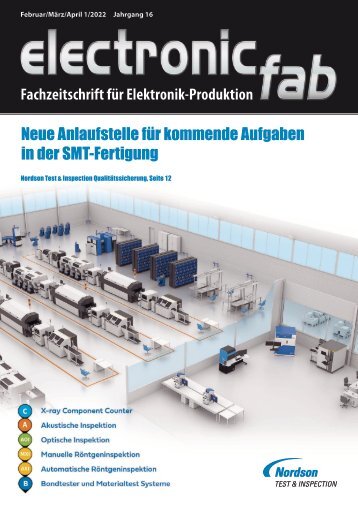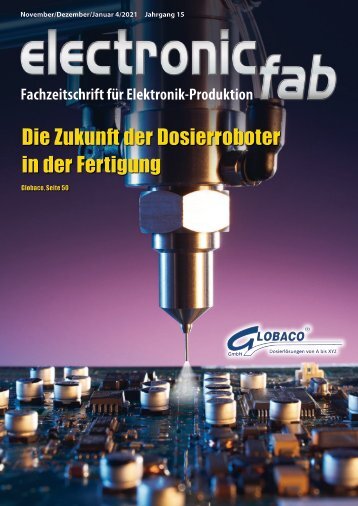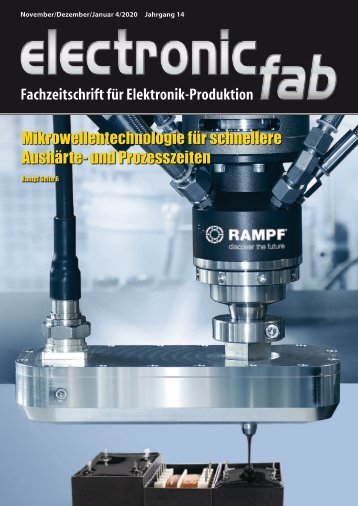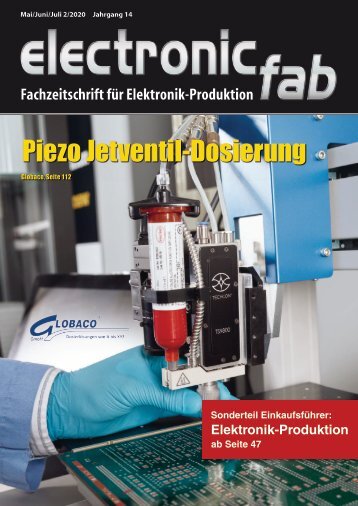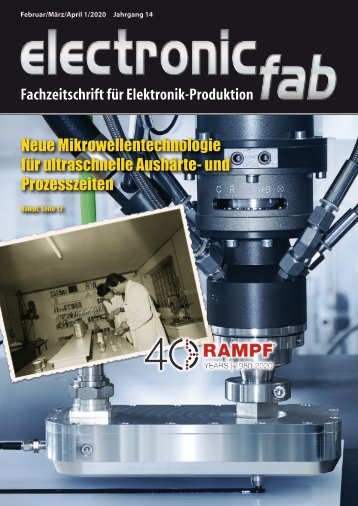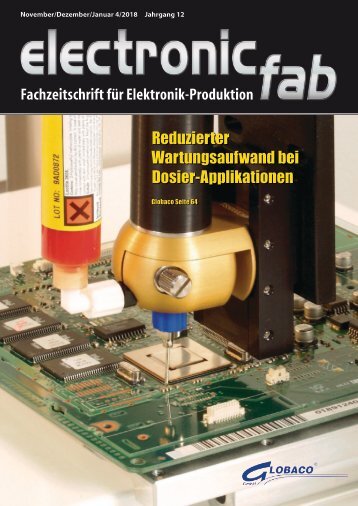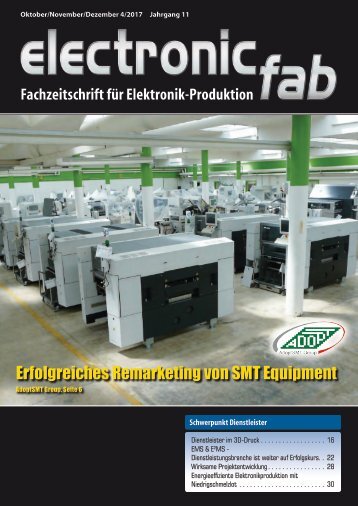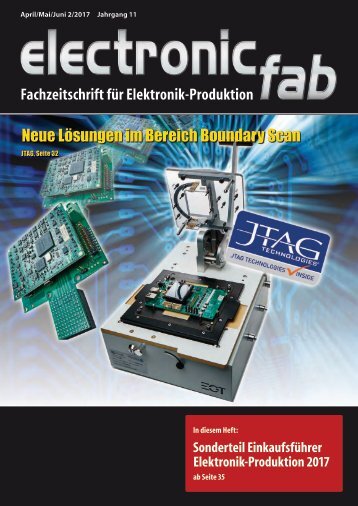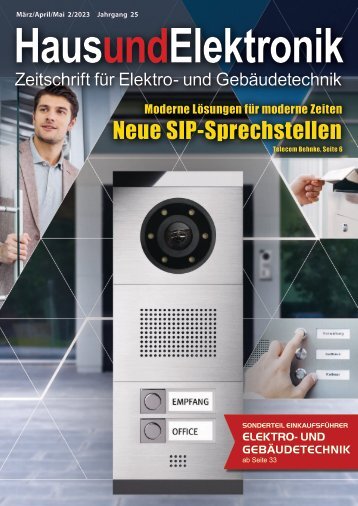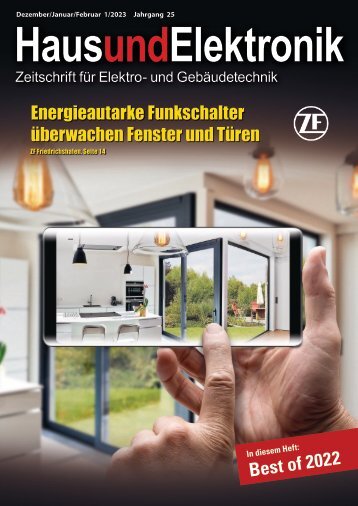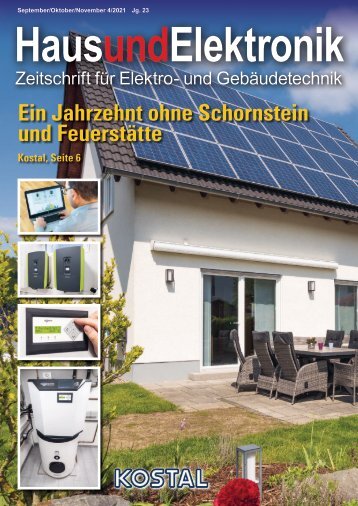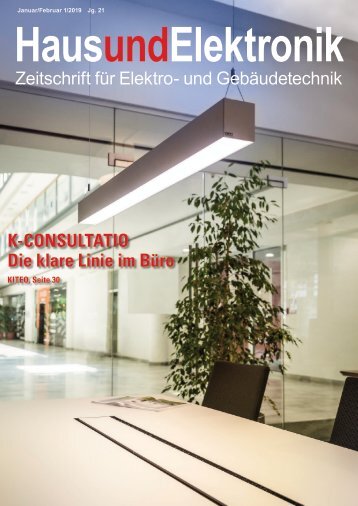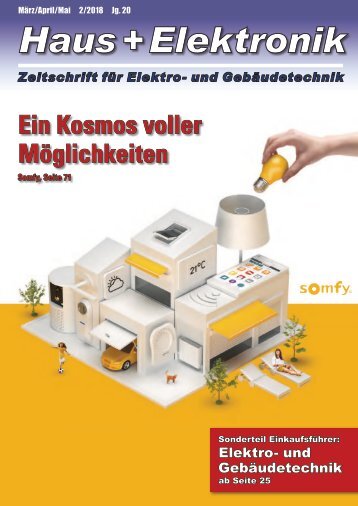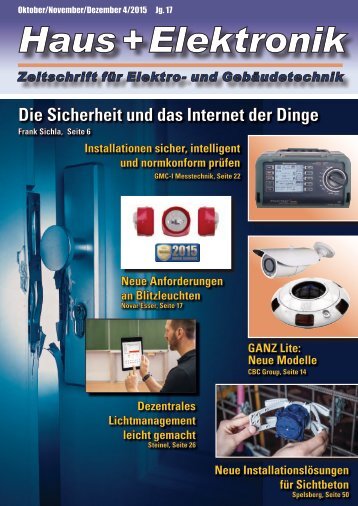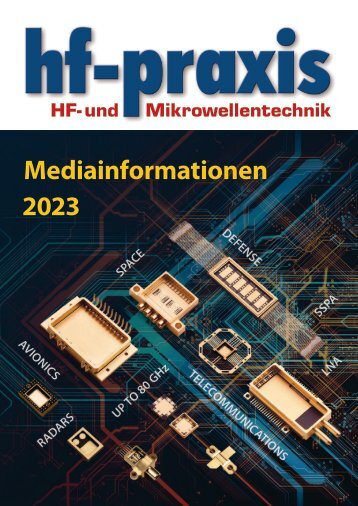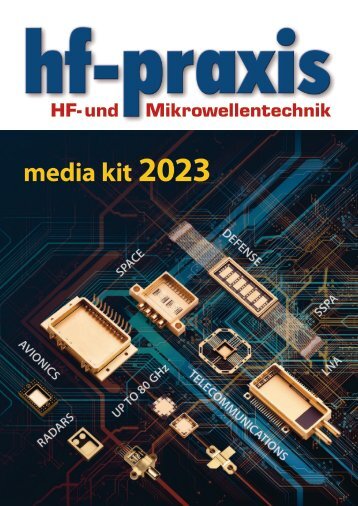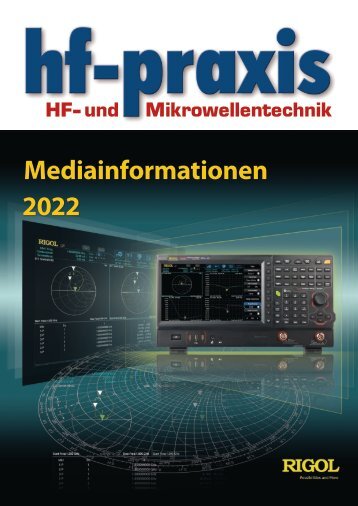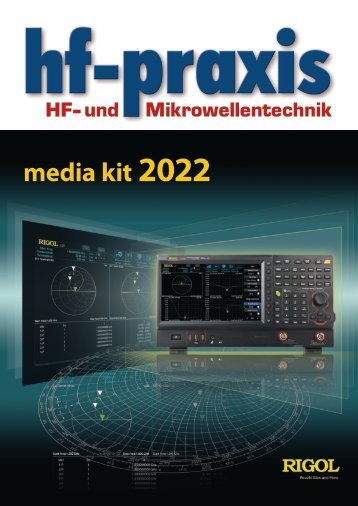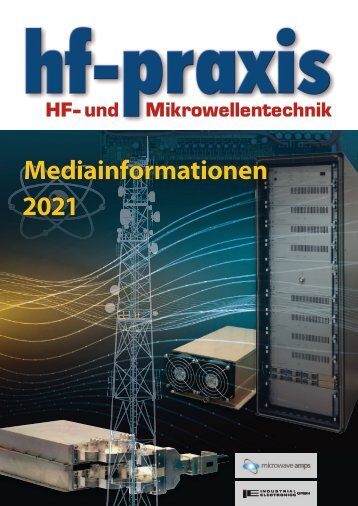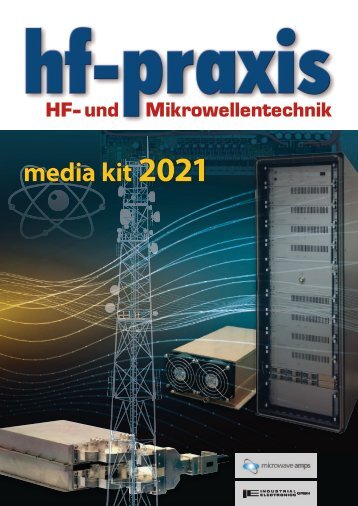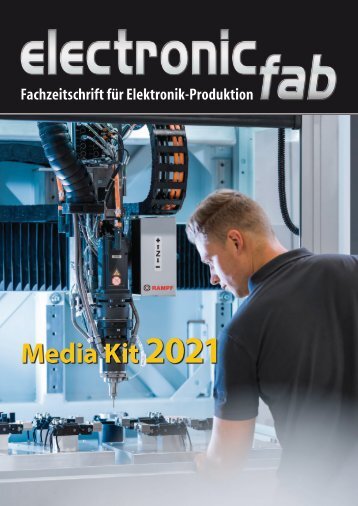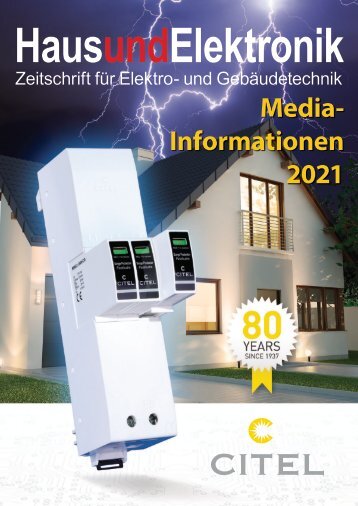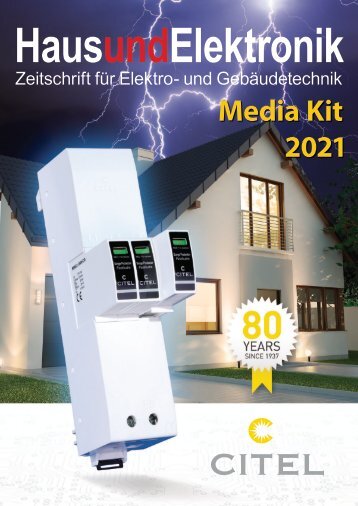Herzlich Willkommen beim beam-Verlag in Marburg, dem Fachverlag für anspruchsvolle Elektronik-Literatur.
Wir freuen uns, Sie auf unserem ePaper-Kiosk begrüßen zu können.
2-2018
- Text
- Komponenten
- Technik
- Radio
- Filter
- Oszillatoren
- Quarze
- Emv
- Wireless
- Messtechnik
- Bauelemente
Fachzeitschrift für Hochfrequenz- und Mikrowellentechnik
Marktübersicht Module
Marktübersicht Module und Zubehör Ultra-Low Power Radio Module for IoT Applications The new RC18x0 Radio Module platform is a series of compact surface-mounted ultra-low power RF modules based on the CC1310 system-on-chip from Texas Instruments. The modules include a low power RF transceiver compliant to IEEE 802.15.4g, Wireless M-Bus and many proprietary protocols. It is ideal for battery operated sensors in 6LoWPAN networks. The ultra-low power radio consumes only 5.5 mA in receive mode and 22 mA during transmission at 14 dBm. The high-performance radio is complemented with a powerful ARM Cortex M3 controller with up to 128 kB of Flash memory and 20 kB of SRAM. A 4 kB EEPROM, and additional 256 kB Flash is optional. 30 digital and analogue I/O makes it easy to interface sensors and actuators in control and monitoring applications. An advanced low power sensor co-processor is available for direct sensor interface. Using the new module together with the TI-RTOS from Texas Instruments is a powerful combination to build any end application. Part of the TI-RTOS is programmed in ROM, leaving more Flash memory to the application firmware. The modules are also supported by the open source operating system Contiki, through the CC1310 Contiki port. The compact surface mount modules, which measure only 12.7 x 25.4 mm, are delivered in tape and reel packaging. Samples and Developments Kits are available now. ■ Radiocrafts AS www.radiocrafts.com GPRS/GNSS-Kombimodul mit Bluetooth 4.0 dual mode Kombimoduls MC60E auch Evaluierungs- Boards und TE-A Kits. ■ MSC Technologies GmbH www.msc-technologies.eu WiFi und Bluetooth vereint in einem Funkmodul Superflache Multibandantenne für LTE, WLAN und GNSS Das GPRS/GNSS-Quad-Band-Kombimodul MC60E unterstützt Bluetooth 3.0 und Bluetooth 4.0 BLE. Der Baustein ist Pin-kompatibel zum GSM/GNSS-Kombimodul MC60 von Quectel und in einem kompakten Gehäuse mit Abmessungen von 18,7 × 16,0 × 2,1 mm untergebracht. Das GPRS/GNSS-Kombimodul MC60E basiert auf der MT2503DV/EB-Plattform, welche die Chipsätze MT6261 (GSM/GPRS) und MT3333 (GNSS) von Mediatek vereint. Der im Modul integrierte Low Noise Amplifier sorgt - selbst bei schwachen Signalen - für ausgezeichnete Acquisition- und Tracking- Eigenschaften. Die Tracking-Empfindlichkeit von -167 dBm ermöglicht den Einsatz passiver GNSS-Antennen. Der Strombedarf des MC60E zeichnet sich durch besonders niedrigen Peak-, Ruhe-, und Durchschnittsverbrauch aus. Mit diesen Features ist das Kombimodul besonders für Anwendungen geeignet, die eine energieeffiziente Bluetooth-Funktionalität benötigen. Darüber hinaus bietet der Baustein GNSS für die Satellitennavigation und verfügt über eine Dual SIM Single Standby- Funktion für das GPRS. Damit eröffnen sich eine Reihe von M2M-Anwendungen wie tragbare Geräte, Fahrzeug-, Personen- und Tier-Tracking-Systeme usw. MSC Technologies liefert neben Mustern des Quectel- HY-Line Communication bietet mit dem PAN9026 von Panasonic ein Dualband- 2,4/5-GHz-802.11-a/b/g/n-WiFi-Funkmodul mit integriertem Bluetooth BDR/EDR/ LE an. Es wurde speziell für Applikationen entwickelt, in denen hohe Integrität und Kosteneffizienz eine wichtige Rolle spielen. Die gleichzeitige und unabhängige Nutzung der beiden Funkstandards erlaubt hohe Datenraten und Low-Power-Operationen. Das integrierte Power Management, eine schnelle Dual Core CPU, die Unterstützung des 802.11i-Security-Standards und das High-Speed-Dateninterface liefern die notwendige Performance und Qualität für Produkte der nächsten Generation. Weitere Informationen unter www.hy-line.de/panasonic/PAN9026. ■ HY-Line Communication Products www.hy-line.de Die neue Multibandantenne für LTE/WLAN/ GNSS von PCTEL zeichnet sich durch ihr besonders flaches Profil aus. Sie kombiniert das bewährte High-Rejection-Multi-GNSS von PCTEL für die präzise Zeit- und Ortserfassung mit leistungsstarker Datenkonnektivität auf diversen Wellenbändern. Die Antenne ist robust und leicht zu installieren, sodass sie sich für den Einsatz in der Präzisionslandwirtschaft, für verdeckte Sicherheitsinstallationen und für das Internet der Dinge (IoT) im Industriebereich anbietet. Die neue Antenne von PCTEL ist deshalb besonders flach, bietet aber trotzdem die volle Leistung im Multibandbereich. Sie verfügt über ein sehr flaches und robustes Gehäuse und unterstützt in Sachen Datenkonnektivität Multiband LTE MIMO und Dualband 2,4/5-GHz-WLAN sowie die Satellitentechnologien GPS, Glonass, Bei- Dou und Galileo GNSS. Alle GNSS-Elemente enthalten die patentierte High-Rejection-Technologie von PCTEL für eine zuverlässige Satellitenverbindung, auch wenn LTE- und andere Störsignale vorhanden sind. Die Antenne wurde unter extremsten Bedingungen und auf schwerem landwirtschaftlichem Gerät getestet. ■ PCTEL, Inc. www.pctel.com 14 hf-praxis 2/2018
Marktübersicht Module und Zubehör Ultra-kompaktes Multi-Band- NB-IoT-Modul Full-featured Bluetooth 5 Module Quectel hat mit dem BC68 ein neues, extrem kleines LTE Cat. NB1-Modul vorgestellt. Mit seinen Maßen von 17,7 × 15,8 × 2,3 mm entspricht die Größe des BC68 exakt der des Quectel-GSM-Moduls M66, sodass Anwendungen für beide Module kompatibel entwickelt werden können. Der Wechsel von GSM/GPRS zu NB-IoT ist demzufolge einfach möglich.Das Modul weist einen extrem niedrigen Stromverbrauch und eine hohe Empfindlichkeit auf. Es unterstützt mit B1/ B3/B5/B8/B20/B28 zahlreiche Frequenzbänder. Dadurch ist das BC68 weltweit in einer Vielzahl von IoT-Anwendungsgebieten wie zum Beispiel Smart Metering, Bike Sharing, Smart Parking, Smart City, Sicherheitstracking, Umweltüberwachung oder Smart Home einsetzbar. Mit dem in Kürze erhältlichen Development-Kit BC68-DVK lassen sich individuelle Anwendungen direkt entwickeln und damit die Time-To-Market minimieren. Einige technische Kenndaten: SMD-Bauform 17,7 × 15,8 × 2,3 mm, M66-Formfaktor, Stromverbrauch: Ruhezustand: 6 mA, PSM: 5 µA; weltweite Einsetzbarkeit durch Multi-Band-Unterstützung (B1/B3/B5/ B8/B20/B28), Temperaturbereich: -40 bis 85 °C, hohe Empfindlichkeit von 129 dBm, RoHS-konform. ■ CompoTEK GmbH www.compotek.de From ublox comes the launch of its full Bluetooth 5 compliant NINA-B3 wireless MCU (microcontroller unit) module. Featuring Bluetooth low energy long range connectivity, high data transfer rates and supporting Bluetooth mesh and 802.15.4, NINAB3 caters to applications in smart buildings, smart cities, and the Industry 4.0, including smart lighting systems, industrial sensor networks, asset tracking solutions, and building automation systems. Based on Nordic Semiconductor’s nRF52840 chip, the ublox NINAB3 Bluetooth low energy module stands out for the attention given to streamlining product development. The full Bluetooth 5 NINAB3 module is available in two flavors. The first variant, NINAB31, comes pre-flashed with u-blox’s Connectivity Software, the most feature-rich and easy-to-use on the market. For product developers, eliminating the need for embedded programming means smoother, hassle-free integration and accelerated time-to-market. And ublox’s proprietary secure boot ensures that security needs are met, even for the most critical industrial and medical applications. The second variant, NINAB30, gives customers a broader scope of application thanks to Bluetooth mesh and Thread support as well as access to a whole host of wired and wireless interfaces. Its powerful Cortex M4F microcontroller can run advanced applications right on the module, reducing external hardware needs and, ultimately, shrinking end device size and cutting costs. NINAB3 is available with a highly sensitive internal antenna specifically designed for the module’s small form factor, achieving optimal radio range performance even in small end product designs. Pin compatibility with the other ublox NINA short-range communication modules limits design effort for product developers developing multiple device variants, e.g. featuring only WiFi or Bluetooth connectivity. ■ u-blox www.u-blox.com hf-praxis 2/2018 15
- Seite 1 und 2: Februar 2/2018 Jahrgang 23 HF- und
- Seite 3 und 4: Editorial Trägheitsgesetz Technisc
- Seite 5 und 6: Standardkonforme EMF-Messlösungen
- Seite 8 und 9: HF- und Mikrowellentechnik Schwerpu
- Seite 10 und 11: Marktübersicht Module und Zubehör
- Seite 12 und 13: Marktübersicht Module und Zubehör
- Seite 16 und 17: Marktübersicht Module und Zubehör
- Seite 18 und 19: Funkmodule Neues Bluetooth-Low-Ener
- Seite 20 und 21: Rubriken Bauelemente Ein passiver H
- Seite 22 und 23: Bauelemente Bild 2: LTC5553 als Up-
- Seite 24 und 25: Bauelemente Bild 6: Streuverlust LO
- Seite 26 und 27: Bauelemente Bild 9: Das Evaluation
- Seite 28 und 29: Bauelemente Aktiver Gleichrichter-C
- Seite 30 und 31: Bauelemente Rauscharmer LNA für 0,
- Seite 32 und 33: Grundlagen Das Dezibel in HF- und M
- Seite 34 und 35: Rubriken Grundlagen setzt. Auch die
- Seite 36 und 37: Grundlagen Bild 10: Der Crestfaktor
- Seite 38 und 39: Grundlagen Aus dem Dynamikumfang l
- Seite 40 und 41: Stromversorgung Hochgenaue Spannung
- Seite 42: Stromversorgung Spannungsrauschen i
- Seite 48 und 49: Praxis RED - die neue Zulassungsric
- Seite 50 und 51: Design Erstes Toolset für 5G-HF-De
- Seite 52 und 53: Elektromechanik Eingebettete und ei
- Seite 54 und 55: Messtechnik Verbesserte DAC-Phasenr
- Seite 56 und 57: Messtechnik Bild 6: Regler-Rauschdi
- Seite 58 und 59: Messtechnik Messergebnisse Bei der
- Seite 60 und 61: Messtechnik Standardkonforme EMF-Me
- Seite 62 und 63: Messtechnik Test einer Radarantenne
- Seite 64 und 65:
Messtechnik Überwachungsempfänger
- Seite 66 und 67:
Messtechnik Bild 5: Festlegung eine
- Seite 68 und 69:
Test & Measurement Vector Signal Ge
- Seite 70 und 71:
RF & Wireless WiFi.11AX - What’s
- Seite 72 und 73:
RF & Wireless Design Quasonix achie
- Seite 74 und 75:
RF & Wireless AA-Series Field Gener
- Seite 76 und 77:
RF & Wireless Design Tyndall Nation
- Seite 78 und 79:
RF & Wireless Test & Measurement Ne
- Seite 80 und 81:
RF & Wireless News Keysight Technol
- Seite 82 und 83:
RF & Wireless News Keysight Technol
- Seite 84 und 85:
C O M P L I A N T HAND FLEX CABLES
- Seite 86:
RF & Wireless/Impressum NI announce
Unangemessen
Laden...
Magazin per E-Mail verschicken
Laden...
Einbetten
Laden...
hf-praxis
PC & Industrie
meditronic-journal
electronic fab
Haus und Elektronik
Mediadaten
© beam-Verlag Dipl.-Ing. Reinhard Birchel

